Michigan’s lake towns are the stuff of summer legends. Every year, when the weather warms, families across the state (and especially from Metro Detroit) pack up the car and head “Up North” for a dose of sun, sand, and small-town charm. It’s a time-honored tradition in the Great Lakes State, after all, no point in Michigan is more than 85 miles from one of the Great Lakes, and you’re never more than a few miles from an inland lake. With so much water everywhere, it’s no wonder Michigan boasts dozens of storybook lakefront communities that have been delighting visitors for generations. From Lake Michigan’s resort beaches to Lake Huron’s historic harbors and the wild shores of Lake Superior, each town offers its own slice of paradise. This insider’s guide, written in the voice of a lifelong Michigander who knows these places by heart, will take you through 28 must-visit Michigan lake towns and what makes each one special. Buckle up for a friendly, locally rooted tour of the best spots to swim, savor, and sightsee on your next perfect getaway.
Metro Detroit & Southeast Michigan Escapes
MICHIGAN’S THUMB COAST: LAKE HURON & SAGINAW BAY
East Central Michigan Lake Towns
Northeast Michigan Lake Towns
Northern Michigan (Straits Area) Lake Towns
Upper Peninsula Lake Towns
North Central Michigan Lake Towns
NORTHWEST MICHIGAN LAKE TOWNS
Southwest Michigan Lake Towns
For even more weekend‑getaway inspiration, check out 24 Charming Small Towns in Michigan’s Upper and Lower Peninsulas.
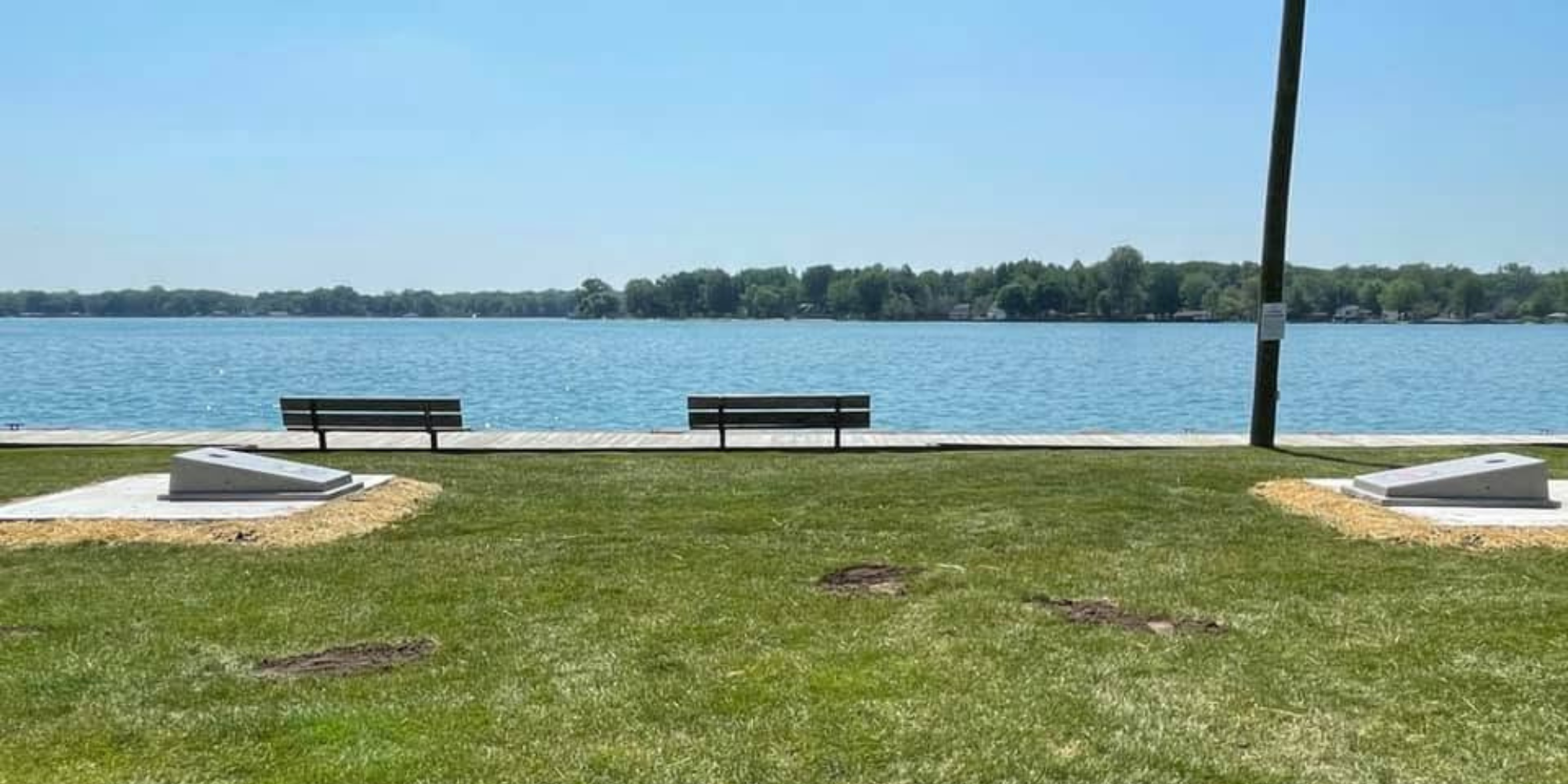 City of Algonac Government & Community Service, Facebook
City of Algonac Government & Community Service, Facebook
Metro Detroit & Southeast Michigan Escapes
Just beyond Detroit’s urban edge lies a surprising cluster of waterfront gems, each under 90 minutes away, that feel worlds apart from the city. From the lapping currents of the St. Clair River to sandy bays on Lake St. Clair, these towns blend small‑town charm with easy access. Whether you’re hunting antique wooden boats in Algonac, cycling along manicured shoreline trails in Grosse Pointe Shores, or splashing in Metro Beach’s splash pad, these escapes deliver fresh‑air fun for families and locals alike.
Algonac
Algonac perches on the “largest freshwater river delta in the world,” where dozens of winding canals earned it the nickname “Venice of Michigan.” Incorporated as a village in 1867, today’s Algonac still honors its boat‑building past, the original Chris‑Craft factory once stood here, and the annual Antique Classic Boat Show draws wooden‑boat enthusiasts each June. Stroll the half‑mile riverfront boardwalk and watch freighters pass under the Blue Water Bridge, or launch your own boat from one of the deep‑water marinas. Nearby Algonac State Park offers 1,550 acres of river frontage, hiking trails through rare oak savannas, and a shooting range for outdoor sports.
- Must‑Do: Rent a kayak at the Algonac Harbour Club to explore quiet back canals where chipmunks dart among cattails. Hike the Oak Plain Trail through the park’s lake‑plain prairies, then cool off with shoreline walleye fishing at the park’s riverfront beach. In July, catch the Harborfest Boat Parade lit up with LEDs as family‑friendly fireworks reflect off the water.
- Culture & History: Tour the Algonac-Clay Township Maritime Museum, housed in a converted historic schoolhouse, to see preserved engine parts from early freighters and hear stories of the St. Clair Flats’ 19th‑century shipping heyday.
- Local Eats: Dine at Walter’s Marina Restaurant for perch tacos and house‑made coleslaw on a shaded deck overlooking slip‑docked sailboats. For bakery treats and breakfast specials, Anchor Café is known for towering blueberry pancakes and strong, local‑roasted coffee.
St. Clair Shores
Lining Lake St. Clair’s southern shore, St. Clair Shores keeps summers sizzling with bustling marina districts, family beaches, and the famed Nautical Mile, a mile‑long stretch of Jefferson Avenue featuring boat dealers, waterfront pubs, and open‑air concerts. Three main parks, Blossom Heath, Veterans Memorial, and Lac Sainte Clair, offer splash pads, fishing piers, and playgrounds that draw suburban families each weekend.
- Must‑Do: Bike or stroll the Lake St. Clair Shoreline Trail, which winds past wetlands, marinas, and sandy coves perfect for a quick dip. Join a charter at Jefferson Beach Marina for a guided fishing trip targeting muskellunge and perch. Don’t miss fireworks over the water during SummerFest each late June.
- Culture & History: Visit the St. Clair Shores Historical Museum in Milliken State Park to learn how this lakeside suburb evolved from fishing village to yacht club haven. In July, the Miss St. Clair Shores Scholarship Pageant (running since 1953) brings hometown pride and live performances to South Lake High School.
- Local Eats: Sip a craft beer at Water’s Edge Tavern, which overlooks the marina and serves hearty fish‑and‑chips. For casual lakeside eats, Bumpy’s is a local institution for burgers and char‑grilled perch sandwiches.
Chesterfield / Harrison Township
Anchored on Anchor Bay’s shores, these neighboring townships share Lake St. Clair Metropark, a 770‑acre regional park featuring a mile‑long sandy beach, Olympic‑sized pool, water slides, and nature center that logs over 275 bird species. The park’s paved Lakefront Trail offers eight miles of cycling and jogging with sweeping bay vistas.
- Must‑Do: Spend the afternoon paddling shallow Anchor Bay waters, then hike the Black Creek Marsh Trail through wetlands teeming with herons and turtles. Grab lunch at the park’s Picnic Pavilion, where shaded tables overlook Metro Beach’s classic lifeguard stands.
- Culture & History: Explore the original Metro Beach bathhouse, condemned and then restored as a historic landmark showcasing 1950s resort‑era photos and memorabilia. Every October, Harrison Township’s Lakeside Apple Festival fills the park with homemade cider, dutch‑oven cooking demos, and live folk music.
- Local Eats: Feast on wood‑fired pizza and local wine at Cherry Point Bar & Grill, perched on the marina with sunset-facing patio seating. For a quick bite, Pirate’s Cove serves fish tacos and corn dogs to sunburnt beachgoers.
Grosse Pointe Shores
At the northern edge of Detroit’s Gold Coast, Grosse Pointe Shores links nine ornamental waterfront parks along Lake St. Clair, each offering boat launches, playgrounds, and serene picnic groves. Members of the Grosse Pointe Yacht Club host national sailing regattas and dining events in their historic 1929 clubhouse, visible by its iconic bell tower.
- Must‑Do: Cycle the full length of the Waterfront Trail, pausing to swim in protected coves or kayak under the yacht club’s wooden footbridge. Enjoy complimentary concerts in the park’s band shell during the Shores’ Summer Sounds series.
- Culture & History: Tour the Grosse Pointe War Memorial, an Art Deco facility built in the 1940s on Belle Isle that hosts art exhibits, theater productions, and community forums.
- Local Eats: Brunch at Bayview Café, famed for smoked whitefish Benedict, and linger over Michigan raspberries in their signature pancakes. For upscale waterfront dining, Marina Grill offers fresh perch and seasonal risottos with panoramic lake views.
Marine City
Perched on a bluff above the St. Clair River, Marine City preserves a grand main street of 19th‑century brick facades, once home to freighter captains and shipyard magnates. The Riverwalk Historic District stretches along 500 feet of shoreline, punctuated by plaques recounting the Pittsburgh Steamship Company’s legacy.
- Must‑Do: Climb the restored Marine City Water Tower for sweeping river and Canadian shoreline panoramas. Attend the annual Tall Ship Festival, where visiting schooners moor alongside local wooden boat displays and sea shanty performances.
- Culture & History: Delve into the Maritime Museum of the Great Lakes, housed in a 19th‑century warehouse, to see ship models and navigational instruments salvaged from regional wrecks.
- Local Eats: Dock at Driftwood Charley’s for lakeside perch baskets and rotating craft beer taps. For coffee and pastries, The Lighter Side Café operates in a refurbished lighthouse keeper’s cottage, complete with riverfront terraces.
Michigan’s Thumb Coast: Lake Huron & Saginaw Bay
Stretching along Lake Huron’s eastern “thumb,” these towns combine sandy beaches, historic lighthouses, and summer festivals that celebrate small‑town spirit against a backdrop of shimmering water.
Port Sanilac
Port Sanilac centers on the Sturgeon Point Lighthouse, the state’s oldest operating light station (1869) with its original Fresnel lens still in service. The village’s brick‑lined streets host antique shops, art galleries, and seasonal farmers markets. A sheltered harbor and sandy beach provide safe swimming and sheltered kayaking.
- Must‑Do: Climb the lighthouse’s 75 steps on open‑house weekends for sweeping Saginaw Bay vistas. Browse waterfront boutiques during the weekly Bay Breeze Farmers Market (June–August). In mid‑July, enjoy concerts and carnival rides at the Sanilac County Fair, just west of town.
- Culture & History: Wander the Port Sanilac Village Association’s self‑guided walking tour, featuring historic homes and tales of early lumber barons who built the port.
- Local Eats: Dine at The Lighthouse Café for perch and potato pancakes, then sample homemade fudge at Retro Scoop across the street.
Caseville
Caseville’s half‑mile beach on Bayport Road is famed for its gentle gradient and clear, warm waters, ideal for families and paddleboarders alike. Each August, the town transforms into the epicenter of cheeseburger mania with the Cheeseburger in Caseville Festival, featuring parades, sand‑castle contests, and the world‑record cheeseburger assembly.
- Must‑Do: Rent a beach chair and watch kayakers circle Swallow Reef, then join a tournament, mattress‑style tug‑of‑war, on the sand. Cycle the scenic Presque Isle Harbor Trail looping through wetlands and orchards just outside town.
- Culture & History: Explore the restored Conneaut Schoolhouse Museum, where polished wood floors and vintage desks evoke early 20th‑century classroom life.
- Local Eats: Sink your teeth into a record‑setting burger at Burger Bar Caseville, then sip a house‑brewed cherry hard cider at Bay Breeze Cellars.
Port Austin
At the Thumb’s very tip, Port Austin commands limestone bluffs overlooking Lake Huron’s turquoise shallows. Turnip Rock, a sea‑eroded stack accessible only by kayak, draws photographers at dawn when pink light splashes the water. Nearby Port Austin Breakwall offers easy fishing and legendary sunsets.
- Must‑Do: Book a morning kayak tour around Turnip Rock and Flowerpot Island, listening for loons as you paddle. Hike the Port Austin Trailhead through oak‑pine forests to panoramic overlooks of Thunder Bay.
- Culture & History: Visit the Pointe Aux Barques Lighthouse Museum on the adjacent Lighthouse Point for hands‑on exhibits about Great Lakes navigation and shipwreck archaeology.
- Local Eats: Enjoy perch tacos and craft brews at The Dockside Pub, then treat yourself to house‑made cherry ice cream at Port Austin Confectionery.
Harbor Beach
With nearly two miles of natural white‑sand beach, Harbor Beach ranks among Michigan’s finest shorelines. The Harbor Beach Lighthouse Museum (1885) displays original lens panels and keeper’s logs within its restored brick dwelling. A broad marina and waterfront park host summer concerts and weekly farmers markets.
- Must‑Do: Lounge beneath shaded pines at Sanilac County Park, then charter a sportfish boat for salmon and trout excursions off the pier. Drive the Sunset Coast Scenic Byway to nearby rustic hamlets and hidden coves.
- Culture & History: The Sanilac County Historical Museum in downtown showcases maritime artifacts and early resort‑era postcards.
- Local Eats: Savor fish‑and‑chips at Sandbar Café, then unwind with cherry lemonade at Beachside Blend Coffee.
Sandusky
Sandusky’s calm waters cradle the rare Barnhart Reef Lighthouse, one of only two remaining screwpile towers on the Great Lakes, accessible by kayak for up‑close exploration. The village’s Riverwalk meanders along narrow channels once busy with lumber barges, now popular with paddleboarders and anglers.
- Must‑Do: Launch from Becker Park to kayak out to the reef lighthouse at sunrise, spotting bass and sunfish along the way. Attend the Saginaw Bay Birding Festival each May to see warblers and waterfowl in nearby wetlands.
- Culture & History: The Sandusky Historical Society Museum, in a restored one‑room schoolhouse, interprets life on the bay during the lumber boom.
- Local Eats: Warm up with a pasty and locally roasted coffee at The Snug Pasty Shop, then taste small‑batch ales at Reefside Brewing.
 Bay City, Facebook
Bay City, Facebook
East Central Michigan Lake Towns
Following the curve of Michigan’s “mitten” to the east central coast, we reach the area where Saginaw Bay meets the main body of Lake Huron. Here, two historic towns stand out: Bay City and Saginaw. Both are linked by the Saginaw River and a rich lumbering and manufacturing past. These aren’t your typical beach towns; they’re city-like in some ways, but they offer unique waterfront attractions, affordable fun, and a sense of comeback momentum as they revitalize their downtowns. For Metro Detroit families, Bay City and Saginaw are also among the closest “lake towns” (only a 1.5 to 2-hour drive north), making them great for an easy weekend trip.
Bay City
Perched where the Saginaw River flows into Lake Huron’s Saginaw Bay (picture the “base of the thumb” if you’re looking at the Michigan mitten map), Bay City has transformed from a 19th-century lumber boomtown into a quaint historic city with a lively riverfront. It was even named one of the most affordable places to live in the U.S. by U.S. News, hinting at its pleasant, family-friendly vibe. The downtown features vintage brick architecture, antique shops galore, and a beautiful riverside park that hosts festivals and concerts all summer.
- Must-Do: A highlight of Bay City is its tall ship excursions. The Appledore IV, a replica 85-foot schooner, offers sailing adventures right from downtown’s Wenonah Park. Sign up for a tall ship sail and you’ll get to help hoist the sails or just relax and enjoy as the wind carries you out into Saginaw Bay. There’s something undeniably magical about gliding along the water under billowing sails, kids and adults alike will feel like old-time mariners. Back on land, stroll Center Avenue to admire the stunning Victorian mansions that once belonged to lumber barons; many have plaques explaining their history. If you’re around in summer, check out the schedule at Wenonah Park’s band shell, this waterfront amphitheater hosts concerts, movies, and festivals (like the River Roar or the 4th of July Fireworks Festival) with the river as a backdrop.
- Add to the List: Love treasure hunting? Bay City is an antique-lover’s heaven. Don’t miss the Bay City Antiques Center, which, along with its neighbor Bay Antique Center, forms an antique shopping megaplex with over 60,000 square feet of vintage finds. You could spend hours (or days) browsing everything from retro toys to Victorian furniture. When you need a sugar boost, wander into St. Laurent Brothers, one of Michigan’s oldest candy shops (est. 1904), it’s like stepping back in time with its old-fashioned candy counters and roasted nuts. Try their homemade peanut brittle or chocolate-covered malt balls, which are famed statewide.
- Local Eats: Bay City’s food scene mixes pub grub with waterfront dining. A unique option is the Drift Shoreside Beer Garden, which is exactly what it sounds like, a seasonal outdoor beer garden right on the shore, where you can enjoy craft beers, tasty burgers, and even fresh churros while watching boats pass on the river. It’s casual, fun, and often features live music. For something more formal, Old City Hall is a popular restaurant set in Bay City’s historic city hall building, think exposed brick, steaks and seafood, and a great wine list. And if you time it right, a stop at Cream & Sugar Ice Cream or Mooney’s Ice Cream on a hot afternoon will hit the spot (Michigan summers demand ice cream pit stops!).
Saginaw
Located about 15 miles upriver from Bay City, Saginaw is a city with a rich industrial past (famous for its old GM plants) that’s reinventing itself as a cultural and nature destination. It’s perhaps best known for inspiring the jazz song “Shake, Rattle and Roll (I got the blues on the Saginaw River)” and for being Stevie Wonder’s birthplace, but modern Saginaw offers more: a thriving arts scene, easy access to wildlife refuges, and historic districts. Investopedia even cited Saginaw as one of the 50 best cities to retire in the U.S., partly for its affordability and amenities. For travelers, it’s a bit off the beaten path, which means you’ll get a genuine local experience.
- Must-Do: If you’re a history or architecture buff, consider staying a night at the Montague Inn Bed & Breakfast, an elegant 1929 mansion on Lake Linton that now operates as a B&B. It’ll set the mood for exploring Saginaw’s historic side. By day, a fun family activity is biking the Saginaw Valley Rail Trail, a scenic 11-mile paved trail that starts in Saginaw and meanders through forests and wetlands, crossing seven restored wooden railroad bridges. It’s flat and easy, perfect for a leisurely ride (or walk) with plenty of nature sightings along the way. In the evening, see what’s playing at the Temple Theatre, a gorgeously restored 1927 vaudeville and movie palace. This opulent theater hosts everything from comedy shows to symphony concerts, catching a performance under its twinkling starry-sky ceiling is like stepping back in time.
- Add to the List: For nature enthusiasts, Saginaw’s Shiawassee National Wildlife Refuge is a must. Dubbed the “Everglades of Michigan,” this 10,000-acre refuge of wetlands and waterways is teeming with wildlife. One unique way to explore it is via a boat tour with Johnny Panther Quests, they’ll whisk you through the marshes on a small motorboat for a few hours of wildlife spotting (think bald eagles, deer, herons, and more) in areas you simply can’t reach on foot. If you prefer to go at your own pace, the refuge also has a 6.5-mile Wildlife Drive (open seasonally) where you can drive your car slowly through and stop at observation points. Birdwatchers will be in heaven here, especially during spring and fall migrations. Another unexpected attraction is the Marshall M. Fredericks Sculpture Museum at Saginaw Valley State University. Fredericks was a renowned sculptor, and this free museum showcases an impressive collection of his works and other rotating exhibits, a lovely dose of art and culture.
- Local Eats: Saginaw’s Old Town district has become a dining hotspot in recent years. A favorite is Jake’s Old City Grill, a classic chophouse in a historic building, locals celebrate special occasions here over juicy steaks, fresh seafood, and finely crafted martinis. Their wine selection is extensive, and the white tablecloth service is top-notch, yet the vibe remains warm and unpretentious. For a trendy farm-to-table experience, try Artisan Urban Bistro, a small restaurant with an ever-changing seasonal menu; their weekend brunch is spectacular (make a reservation, because locals fill it up fast). Think brioche French toast, gourmet omelets, and creative hashes, it’s the kind of brunch worth getting out of bed early for, even on vacation! Before leaving town, if you have a sweet tooth, grab some to-die-for pastries from Patisserie on Court Street, their almond croissants are the stuff of dreams.
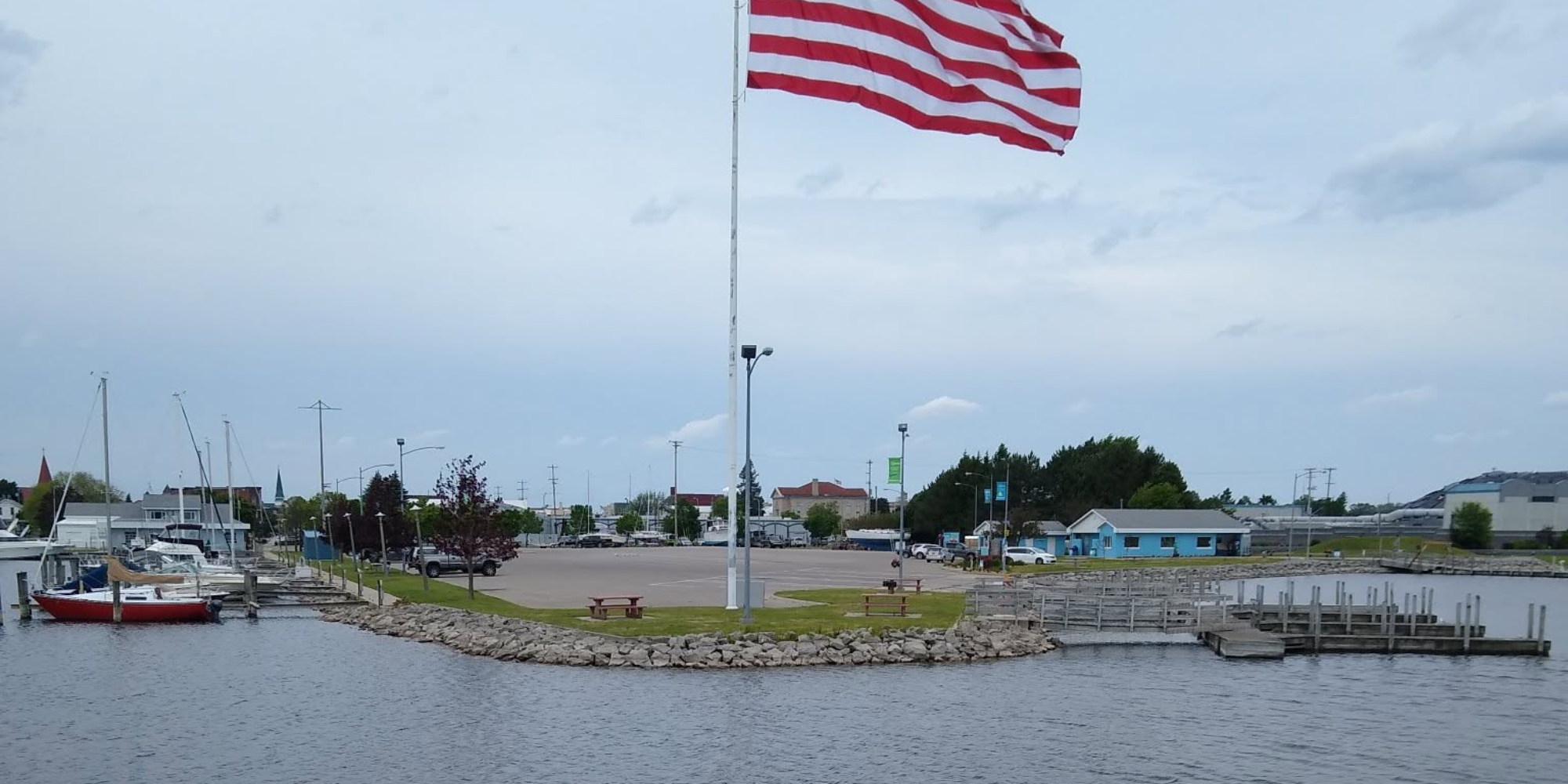 City of Alpena, MI - Information, Facebook
City of Alpena, MI - Information, Facebook
Northeast Michigan Lake Towns
Shifting over to Lake Huron’s side, Northeast Michigan offers a quieter, more laid-back version of the lake town experience. This isn’t the tourist-heavy resort coast, it’s sometimes called the “Sunrise Side” of Michigan for its peaceful morning views over Lake Huron. Here you’ll find friendly small towns where life moves at a gentler pace. Two highlights are Alpena and the twin towns of Tawas City & East Tawas, both known for natural beauty and a touch of nostalgia.
Alpena
Known as the largest city in Michigan’s remote “north-east” (though at 10,000 people it’s still quite small), Alpena sits on the Thunder Bay of Lake Huron and has carved out a niche as the “Shipwreck Capital” of the Great Lakes. Alpena’s harbor was historically treacherous, and nearly 200 shipwrecks rest at the bottom of Thunder Bay, leading to the creation of the Thunder Bay National Marine Sanctuary. Today, Alpena blends maritime history with picturesque parks and a developing downtown arts scene, World Atlas even called it one of Michigan’s most picturesque small towns.
- Must-Do: Dive into Alpena’s maritime heritage at the Great Lakes Maritime Heritage Center, a fantastic (and free!) museum and visitor center that’s part of the marine sanctuary. You can see a life-size schooner replica, try your hand at simulated remotely operated vehicle exploration, and learn about notable wrecks. Once you’ve got the background, experience the shipwrecks themselves, options include a glass-bottom boat tour that takes you right over wreck sites in Thunder Bay (the water is surprisingly clear on calm days), or if you’re adventurous and certified, go scuba diving with local charters. Even kayaking over shallow wrecks is possible, it’s like peering into history beneath your hull.
- Add to the List: For a view from above, climb the New Presque Isle Lighthouse, about 20 miles north of Alpena. This 113-foot tall lighthouse (built in 1870) is one of the tallest Great Lakes lights you can still climb, and the 130-step ascent rewards with a panoramic view of Lake Huron’s expanse. Nearby, you can also find the Old Presque Isle Lighthouse (1840) which is shorter and easier to climb for those less inclined to tackle the taller tower. Back in town, take a leisurely walk through Bay View Park along the Alpena waterfront, it’s especially lovely in the early morning when the sun rises over Thunder Bay, often painting the sky in pastel hues.
- Local Eats: Alpena has some great local dining surprises. One standout is the Red Brick Tap & Barrel, set in a renovated century-old building downtown with exposed brick and a gastropub vibe. They serve everything from fish and chips (appropriate, given the maritime theme) to creative burgers, often sourcing ingredients from local farms. If you’re looking for a classic “Up North” bar with friendly folks, try Black Sheep Pub or Latitudes Tavern for a local craft beer and perch basket. And for a treat, swing by The Alpena Village Chocolatier for hand-dipped chocolates, a sweet way to cap off a day by the lake.
Tawas City & East Tawas
Often simply referred to as “the Tawases,” the neighboring towns of Tawas City and East Tawas sit along Tawas Bay on Lake Huron. Together they make a beloved summer getaway for mid-Michigan folks, known for its small-town Americana feel and a famously picturesque lighthouse. Imagine a vintage candy shop on the corner, beachgoers with coolers heading to the shore, and a general sense that life here hasn’t changed much in decades (in the best way). The Tawases were also highlighted as among Michigan’s most picturesque small towns, time to see why.
- Must-Do: Start with a sweet pit stop at the Village Chocolatier in East Tawas. This charming candy store makes delicious hand-dipped chocolates and fudge, perfect to nibble on as you explore. Then make your way to Tawas Point State Park, a short drive from downtown. This park is home to the Tawas Point Lighthouse, a beautifully restored 1876 lighthouse known as the “Cape Cod of the Midwest” for its classic white tower and red roof. For a small fee, you can tour the lighthouse (when open) and climb to the top for great views of Tawas Bay. The park itself has a mile of sandy beach and is a haven for bird-watchers, the point juts into Lake Huron and attracts all kinds of migratory birds. If you visit in May, you might catch the Tawas Point Birding Festival, but even a casual stroll with binoculars can yield sightings of warblers, eagles, and more.
- Add to the List: Love water sports? Kiteboarding has taken off in Tawas Bay thanks to its shallow waters and steady breezes. Motor City Kite & Surf, a local outfitter (with a name paying homage to Detroit’s “Motor City” moniker), offers lessons for beginners, you’ll often see colorful kites zipping across the bay on windy days. If you prefer something more grounded, take a scenic drive north up US-23 then west on the River Road National Scenic Byway along the Au Sable River. A key stop is the Lumberman’s Monument, a 14-foot bronze statue honoring the lumber era, set on a high bank above the river. There are short trails here with breathtaking overlooks of the Au Sable River Valley that will give you a new appreciation for Michigan’s logging history and natural beauty.
- Local Eats: When hunger calls in the Tawases, head to Boathouse Beer Co. & Boozery. This lively spot in Tawas City brews their own beer and serves up hearty fare like beef tenderloin with pierogi or a good old-fashioned burger. The vibe is friendly and often there’s live music on weekends. For a more scenic dining experience, Social Oak Chophouse & Wine Bar has an outdoor deck right on the water’s edge, perfect for a sunset dinner with a glass of Michigan wine. And if you’re looking for a bit of nightlife, in summer Bikinis Beach Bar (as cheeky as it sounds) often hosts DJs and beach parties, letting you dance in the sand under the stars.
Rogers City
Rogers City sits on Lake Huron’s Sunrise Coast, where US‑23 hugs miles of pristine beach and winds through the Herman Vogler Conservation Area. Founded in 1882 around the world’s largest limestone quarry (the Calcite plant still operates today), this tight‑knit community of under 3,000 blends industrial heritage with unspoiled shoreline vistas. Its Presque Isle Harbor offers calm waters for boating and paddleboarding, while miles of sandy beaches beckon sunbathers and beachcombers seeking Petoskey stones. Beyond the water, the Huron Sunrise Trail stretches east into Cheboygan County, perfect for cycling or bird‑watching in spring migration.
- Must-Do: Explore Ocqueoc Falls, Michigan’s only permanent waterfalls, just 10 miles west of town, the multi‑tiered cascade drops over limestone ledges into a scenic gorge and features cliff‑jumping spots. Paddle the harbor aboard a kayak or join a charter for salmon and trout fishing; the harbor breakwater makes a prime perch for anglers at dawn. Hike the Sunrise Coast Pathway, where interpretive signs highlight the region’s shipwreck history and local wildlife habitats. In summer, don’t miss the Thunder Bay Festival (late July), featuring live music, art vendors, and a spectacular fireworks show over the water.
- Culture & History: Step back in time at the Rogers City Area Museum, housed in a 1908 former jail and library, to view exhibits on the town’s quarrying past and Great Lakes maritime lore. The nearby Calcite Quarry Lookout provides a bird’s‑eye view of the 5‑mile‑long open‑pit limestone operation, a testament to Rogers City’s industrial roots. Winter brings the Great Lakes Lighthouse Festival, celebrating local lighthouses like the Ocqueoc Light in nearby Presque Isle Township.
- Local Eats: Warm up with a hearty pasty from Creel’s Fish & Chips, where fresh‑caught whitefish and lake perch pair perfectly with crisp fries. For coffee and homemade pastries, Harbor Grounds Café offers waterfront views and locally roasted brews. End your day at Dockers Bar & Grill, famous for its perch tacos and lakeside deck, where you can toast a perfect sunset over Huron.
Planning your route? See 15 Best Road Trips from Detroit for ready‑made itineraries.
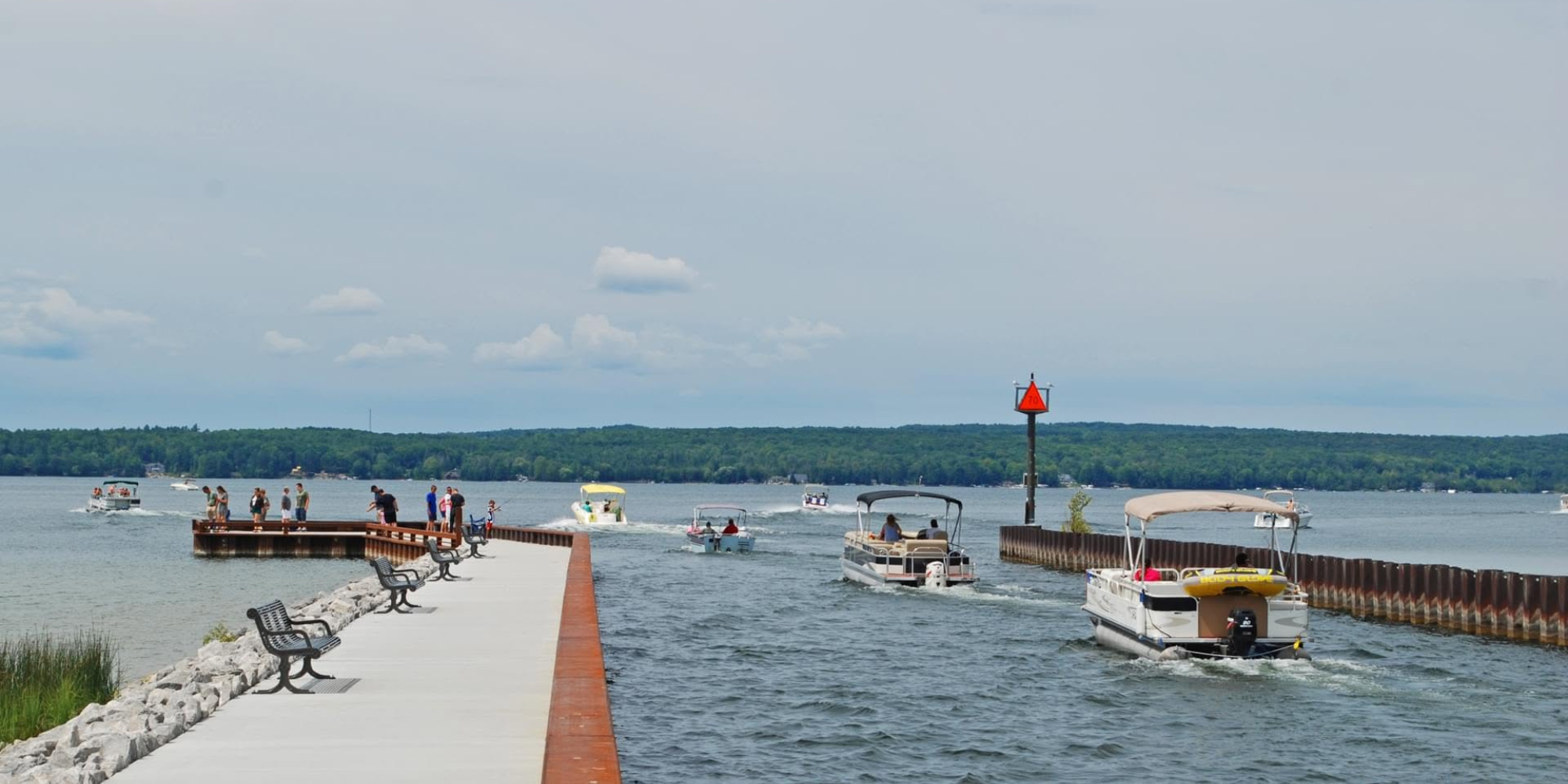 Indian River Chamber of Commerce, Facebook
Indian River Chamber of Commerce, Facebook
Northern Michigan (Straits Area) Lake Towns
Moving up into Michigan’s northern tip (where the Lower Peninsula tapers off at the Straits of Mackinac), you’ll find a few small communities that serve as gateways to adventure. This area is where Lakes Michigan and Huron meet, and it’s steeped in history and natural beauty. Indian River, Mackinac Island, and Mackinaw City are three distinct destinations here, each offering a different way to experience Up North life at the “Tip of the Mitt.”
Indian River
Set between two of Michigan’s largest inland lakes (Burt Lake and Mullett Lake) and traversed by the winding Sturgeon River, Indian River is paradise for outdoorsy families. It’s also home to what Campspot called the “best campground in the U.S.”, Burt Lake State Park, which gives you an idea of the natural splendor on offer. Indian River is more of a relaxed village than a bustling resort town, but it draws campers, boaters, and anglers from all over the state looking to enjoy Northern Michigan’s lakes without the big crowds.
- Must-Do: The number one activity here is getting on the water. Rent a pontoon boat or kayak and explore the Inland Waterway, a historic 40-mile navigable route that connects Lake Huron to Lake Michigan via inland lakes and rivers. You can start on Burt Lake (which has a sandy-bottom beach at the state park for swimming) and cruise down the Indian River to Mullett Lake, enjoying wildlife and peaceful scenery along the way. If you’re seeking a bit more adrenaline (or a way to cool off on a hot day), grab an inner tube or kayak from Big Bear Adventures and float a section of the Sturgeon River, it’s the fastest-flowing river in Michigan’s Lower Peninsula, with gentle rapids that are beginner-friendly but still tons of fun.
- Add to the List: On land, Indian River offers plenty too. Biking enthusiasts should hit the North Central State Trail, a rail-trail that runs right through town. Pedal north about 20 miles and you’ll reach Mackinaw City; go south and you can ride all the way to Gaylord, either way, it’s a scenic journey through forests and fields. A quirky local landmark worth a stop is the Cross in the Woods Shrine, home to one of the world’s largest crucifix sculptures (it’s 55 feet tall!). Even if you’re not religious, it’s an impressive sight nestled among the trees. And if you’re visiting in winter, Indian River is a snowmobiler’s haven, the trail network here is top-notch.
- Local Eats: After a day of fresh air, you’ll have an appetite. Head to the Greenside Grille at the Indian River Golf Club (open to the public) for excellent local whitefish or walleye dinners in a casual-upscale setting. The whitefish is often just hours out of the Great Lakes, you can’t get fresher. For something with Northwoods character, Michael’s Tavern & Steakhouse is a popular spot in a restored 1930s log building; you’ll find baby back ribs that fall off the bone and even some vegan options, showing that Up North cuisine has evolved beyond just meat and potatoes. Don’t be surprised if everyone in the restaurant seems to know each other, it’s that kind of town, and visitors are welcomed like locals.
Cheboygan
Cheboygan, at the mouth of the Cheboygan River where it meets Lake Huron, is the gateway to the Inland Waterway and Cheboygan State Park’s 5,500 acres of forested dunes and shoreline. Once a booming lumber town, Cheboygan now thrives on outdoor recreation, with Elliott Creek’s trout stream and miles of hiking trails through rare coastal wetlands. The town’s Cheboygan Opera House (built 1877) hosts concerts and films in a beautifully restored Victorian venue.
- Must-Do: Spend a morning spotting migratory birds along the Black River Boardwalk, then fish for salmon from the Cheboygan Pier. Drive the scenic Aloha State Park Loop—a 7‑mile byway that travels through wetlands and offers panoramic views of Mullett Lake. In summer, explore Cheboygan State Park, featuring a sandy beach, picnic areas, and the remains of the 1859 Cheboygan Point Lighthouse.
- Culture & History: Tour the Chiefs’ House Museum, a restored log cabin built circa 1873 that interprets early lumberjack life. Learn about the town’s maritime past at the Cheboygan River Maritime Museum, with artifacts from the 1918 storm that wrecked dozens of ships.
- Local Eats: Grab a gourmet sandwich at Main Street Deli, then cool off with ice cream from North Auto Family Drive‑In, a classic carhop spot. For dinner, Dockside Eatery serves fresh perch and walleye in a renovated downtown building overlooking the river.
Mackinac Island
Mackinac Island isn’t just a lake town; it’s a world of its own. Set in the Straits of Mackinac between Michigan’s upper and lower peninsulas, this 3.8-square-mile island is a National Historic Landmark frozen in a charming Victorian era. There are no cars allowed on Mackinac Island; transportation is by bicycle, horse-drawn carriage, or on foot, which makes visiting feel like stepping back in time. It routinely tops travel lists (voted “best summer travel destination in the U.S.” by USA Today readers) and is a must-see for any Michigander or visitor.
- Must-Do: The classic Mackinac activity is simply biking around the island. The road along the perimeter (M-185) is about 8.2 miles and completely flat, hugging the shoreline with gorgeous views of Lake Huron and the Mackinac Bridge in the distance. Rent a bike in town (there are several rental shops as you get off the ferry) or bring your own on the ferry, and take a leisurely ride. You’ll pass natural curiosities like Arch Rock (a limestone arch formation towering above the water) and secluded beaches where you can pause for a picnic. No bike? No problem, you can also explore the island’s interior on foot via hiking trails that crisscross through wooded areas and up to scenic bluffs.
- Sightseeing: History and architecture buffs will enjoy touring Fort Mackinac, an original 18th-century British and American fort on a bluff, complete with reenactors firing muskets and cannons. And you can’t miss the Grand Hotel, the crown jewel of the island. This opulent hotel opened in 1887 and boasts the world’s longest porch (660 feet of Victorian grandeur). Non-guests can visit the Grand Hotel for a fee (around $10), it’s worth it to stroll the famous porch, peek at the luxuriously appointed lobby, and enjoy the gardens. The visual of ladies and gentlemen in their summer best sitting on rocking chairs overlooking the Straits is like a scene from a period film.
- Downtown Stroll: Mackinac Island’s Main Street is postcard-perfect and packed with shops. Be sure to stop by Little Luxuries for unique souvenirs and gifts, and Mackinac Outfitter if you need an extra fleece or rain jacket for the ever-changing island weather. Art lovers should check out Somewhere in Time Gallery, named after the classic 1980 film shot on the island, for beautiful Mackinac-themed art and vintage posters. And of course, buy some fudge! Mackinac Island is famous for its fudge shops, and the sweet scent literally wafts down the street. Pop into any of the iconic fudge stores (Ryba’s, Murdick’s, JoAnn’s, you can’t go wrong) to watch it being made on marble slabs and sample a piece (or three). It’s a tradition to bring back a box of fudge for those who couldn’t come along.
- Local Eats: Despite its small size, Mackinac Island has diverse dining. For lunch, a favorite is the Watercolor Café, a cheery little spot right on the harbor known for sandwiches and homemade desserts. It’s less touristy and a nice place to chat with year-round islanders. If you’re looking for the quintessential Mackinac bar experience, the Pink Pony (attached to the Chippewa Hotel) is the place, snag an outdoor seat overlooking the marina and try their famous Rum Runner slush drink. The Pink Pony often has live music in the evenings and a fun, laid-back vibe. Another newcomer making a splash is the Lilac Lounge at Mission Point Resort, which pays homage to Mackinac’s famous lilac blooms. Their signature cocktail, the Lilac Bee’s Knees, is a floral twist on a Prohibition-era drink featuring local gin and lavender-honey syrup, it’s as lovely as it sounds.
Mackinaw City
Back on the mainland, at the northernmost tip of Michigan’s Lower Peninsula, sits Mackinaw City. This small city is the jumping-off point for ferries to Mackinac Island and the terminus of I-75 before you cross the Mackinac Bridge to the U.P. It’s a popular pit stop for tourists, but also a worthy destination on its own with historical sites and yes, more fudge and ice cream (you are still in Up North tourist country!). One claim to fame: Mackinaw City is home to Colonial Michilimackinac, an 18th-century French fort and fur trading village that FamilyFun Magazine once ranked among the top 10 tourist attractions for families in the U.S..
- Must-Do: History comes alive at Colonial Michilimackinac, located right on the shore where Lake Michigan and Lake Huron meet. The site includes a reconstructed fort and village with live demonstrations, kids and adults will both get a kick out of the musket and cannon firings that occur regularly. There’s also a newly renovated visitor center and museum store where you can dive deeper into the 1700s fur trade history. After immersing yourself in the past, switch gears to a very modern (and ancient) wonder: Headlands International Dark Sky Park. Just 2 miles west of town, this county park offers exceptional stargazing on clear nights, bring a blanket, lay back, and marvel at the Milky Way unfurling overhead. It’s free and open year-round; on summer nights you might catch an astronomy program or simply enjoy the serenity of a sky untouched by city lights.
- Add to the List: A couple more fun stops: Climb the 40-foot tower of McGulpin Point Lighthouse, a lesser-known lighthouse (circa 1869) just outside Mackinaw City that offers panoramic views of the straits. Or wander through Heritage Village, a collection of historic buildings (church, one-room school, lumbermill) relocated to a park setting, strolling here feels like walking through a 19th-century small town. And before leaving, take a walk down Central Avenue in Mackinaw City’s downtown. It’s touristy but fun: souvenir shops, candy stores, and the famous Wienerlicious hot dog stand, which you literally cannot miss thanks to the giant fiberglass hot dog on its roof! Yes, it’s goofy, but grab a dog for the road, it’s all part of the experience.
- Local Eats: For a town of about 800 residents, Mackinaw City has an impressive variety of food thanks to the steady flow of tourists. If you’re craving Mexican, follow the locals to El Zarape, a tiny taqueria known for authentic flavors, a local artist, Mary Lou Peters, raves about their grilled chicken enchiladas loaded with lettuce, salsa and guac. For classic Up North fare, Audie’s Restaurant is a stalwart that’s been serving travelers for decades; try the planked whitefish (a regional specialty mentioned earlier), they get it fresh from the straits, and you can taste the difference. And of course, indulge your sweet tooth one last time: there are at least three fudge shops in Mackinaw City, so sample freely. Pro tip: many fudge shops offer free slices near closing time; it beats carrying leftovers back on the road!
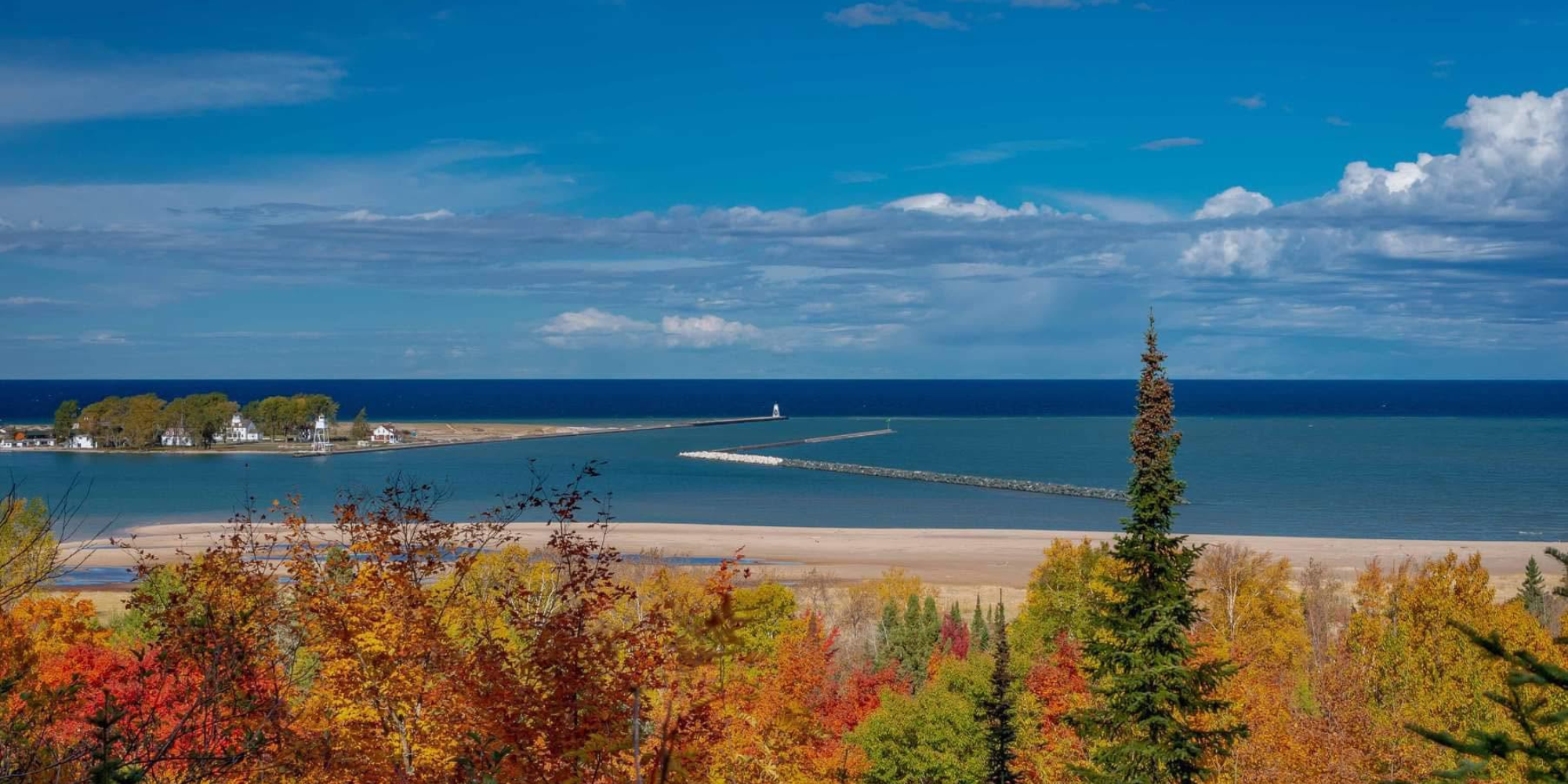 Grand Marais, MI, Facebook
Grand Marais, MI, Facebook
Upper Peninsula Lake Towns
Cross the Mighty Mac (the Mackinac Bridge) and you enter Michigan’s Upper Peninsula, a whole new world of wilderness, waterfalls, and rugged lakefront scenery. The U.P. is less populated and more spread out, but its lake towns are absolute gems for those seeking natural beauty and a slower pace. Two U.P. standouts made our insider list: Grand Marais on Lake Superior’s shore, and Marquette, the U.P.’s largest city. Both offer a mix of outdoor adventure and small-town charm that will steal the heart of any nature lover.
Grand Marais
Remote, windswept, and stunningly beautiful, Grand Marais sits on Lake Superior’s southern coast at the eastern gateway to the famed Pictured Rocks National Lakeshore. If you want to get off the beaten path, it doesn’t get much better than this. Condé Nast Traveler even named Grand Marais’ beach one of the most beautiful beaches in America, and when you see the turquoise waters against towering sandstone cliffs, you’ll understand why. (Just don’t expect warm water, Lake Superior is chilly even in August!)
- Must-Do: The main attraction here is Mother Nature. Hike along the Pictured Rocks trails to see jaw-dropping cliffs like Miner’s Castle or Chapel Rock, kayak beneath the multicolored sandstone cliffs (sunset paddle tours are unforgettable), or comb the beaches for agates and driftwood. Grand Marais’ bay has a beautiful crescent of sandy beach perfect for a picnic or a refreshing (if bracing) dip in Superior. A short walk from town, you can visit the Grand Marais Harbor of Refuge with its front and rear range light towers, small historic lighthouses that helped guide ships into the harbor. They make for great photos, especially at sunset. For a dose of history, drive a bit west to the Au Sable Light Station inside Pictured Rocks National Lakeshore. This 1874 lighthouse is reachable by a 1.5-mile hiking trail (or in summer, by a boat cruise) and offers tours that reward you with sweeping Lake Superior vistas.
- Local Eats: Grand Marais may be tiny, but it’s got a mighty little brewpub: Lake Superior Brewing Co. This no-frills microbrewery and pub is a favorite hangout for campers and hikers coming off the trail. They serve a variety of craft beers (with tongue-in-cheek U.P. names like “Backwoods” and “Hematite”), and their burgers are just what you need after a day outside, try the olive burger or blue cheese burger, both local staples. It’s the kind of place where conversation flows easily between locals and visitors swapping adventure stories. If you happen to be around in the morning, hit up The Breakwall Bakery & Café (if open) for strong coffee and fresh donuts or pasties (the U.P.’s famous meat hand-pies). In Grand Marais, life is simple and sweet.
Escanaba
Escanaba blends small‑town warmth with 200 miles of Lake Michigan shoreline in Delta County. The city’s Fjord Trail traces former railroad grades through hardwood forest to secluded beaches, while Sand Point Lighthouse and the Delta County Historical Museum anchor its maritime heritage. Annual events like the Upper Peninsula State Fair and Summerfest showcase local artists, foods, and family fun.
- Must-Do: Hike the Mather Trail in Hiawatha National Forest, then relax at Beaver Grove Preserve beach on Little Bay de Noc. Tee off at Forest Park Golf Course, known for tree‑lined fairways and bay views.
- Culture & History: Step inside the Sand Point Lighthouse Museum, housed in the original 1868 keeper’s dwelling, and climb the 42‑foot tower for panoramic bay views. The Riverside Log Cabin (circa 1840) offers a glimpse into early settler life.
- Local Eats: Savor fresh‑baked pasties at John’s Pasties & Bakery and sample craft brews at Gathering Place Brewery, where seasonal beers reflect local flavors.
Ironwood
Ironwood is the westernmost city in Michigan’s Upper Peninsula, perched on the Montreal River right at the Wisconsin border. Though it sits about 18 miles south of Lake Superior, its location makes it a four‑season gateway to both the lake and the sprawling Ottawa National Forest. Named the “Gateway to Gogebic Country,” Ironwood blends historic iron‑mining roots with a lively outdoor‑recreation scene that draws skiers, hikers, paddlers, and solitude‑seekers alike.
- Hit the slopes: Big Powderhorn Mountain and Whitecap Mountain are just minutes from town, offering downhill runs for all skill levels and vibrant ski‑town après scenes. Trail adventures: Rent a fat‑tire bike or snowmobile and explore over 200 miles of groomed trails through the Ottawa National Forest, summer flower fields give way to fall color and winter’s pristine snow. River stroll: Follow the Montreal River walking path downtown, where colorful murals and interpretive signs detail Ironwood’s iron‑mining heyday.
- Culture & History: Ironwood’s past as a booming iron‑ore hub lives on in its Land of the Falling Waters museum, where interactive exhibits recount miners’ lives and the town’s logging heritage. Tour the Stormy Kromer Factory, birthplace of the famous wool cap, to see skilled seamstresses crafting each hat and pick up an authentic Stormy Kromer for your next chilly adventure. Take the chairlift up to Copper Peak, the world’s only ski flying hill, then pause at the summit observation deck for sweeping panoramas of Lake Superior’s distant blue.
- Local Eats: Warm up with a hearty pasty or homemade soup at Carp River Restaurant, a cozy local favorite after a day of fresh‑air fun. Grab craft brews and shareable pub fare at The Elk & Hound Taproom, known for its rotating taps of Ironwood Brewing Co. beers and lively weekend atmosphere. Fuel your morning with scratch‑made doughnuts and strong coffee at The Daily Grind & Donut Shop, a beloved pit stop for locals gearing up for whatever the day brings.
Manistique
Manistique anchors the Garden Peninsula with its namesake bay and the 1916 East Breakwater Lighthouse. The Manistique Boardwalk, recently expanded with interpretive signage, stretches nearly 2 miles along Lake Michigan and leads to scenic overlooks where you can spot eagles and migrating monarchs. The town also serves as a hub for ferry service to Pinecrest, a preserved 19th‑century lumber camp.
- Must-Do: Rent a bicycle to cruise the boardwalk, stopping at the Robert Clark Memorial Park fishing pier. Venture into the Seney National Wildlife Refuge for moose sightings and quiet canoe routes. In fall, join a guided tour of Kaleva Falls, where cascade pools glow amber.
- Culture & History: Explore the Schoolcraft County Historical Society Museum, featuring local logging memorabilia and Native American artifacts. The SS Chief Wawatam Museum displays the engine room of the historic icebreaker that once connected St. Ignace and Mackinac Island.
- Local Eats: Enjoy lake‑perch chowder at The Owl Café, open since 1937, and cap off your evening with a frosty treat from Shade Tree Creamery.
Marquette
Marquette is the hub of the Upper Peninsula, a vibrant college town (home to Northern Michigan University) and port city on Lake Superior with a surprisingly hip culture amid the wilds. It’s regularly lauded as one of the nation’s best small towns for its mix of outdoor fun and community spirit (named among the 10 best small-town cultural scenes in the U.S. by USA Today). Marquette blends old iron ore industry history with new breweries, art galleries, and an active lifestyle that residents proudly embrace. It’s a hike/bike/kayak paradise by day and a friendly tavern town by night.
- Must-Do: Start with the outdoors, of course. Marquette has miles of Lake Superior shoreline, don’t miss a walk or bike ride along the Lakefront Trail which connects several beaches and parks. You can go from the sandy city beach at McCarty’s Cove (complete with a historic red lighthouse in view) to the rocky Black Rocks area at Presque Isle Park, where brave locals cliff-jump into the frigid waters. If you prefer dry land, hike up Sugarloaf Mountain just outside town; it’s a moderate 15-20 minute hike that rewards you with a panoramic view over Marquette, the forest, and the endless blue of Superior. And in any season, visiting some waterfalls is a must; there are dozens nearby, including easy stops like Dead River Falls or Carp River Falls. In winter, these trails turn into snowshoe and cross-country ski havens, and you might even catch surfers riding Lake Superior’s waves at Presque Isle (yes, winter surfing is a thing here for the hardy!).
- Culture & History: Marquette’s downtown is worth exploring for its local shops and historic buildings made of native sandstone. Stop into the Marquette Regional History Center to learn about the area’s iron mining past and native Anishinaabe culture. A striking sight on the waterfront is the massive Lower Harbor Ore Dock, a decommissioned 1,200-foot-long ore loading dock that stands as a monument to Marquette’s mining era. It’s a favorite spot for photographers, especially when lit by the sunset. Another fun history stop is the Marquette Maritime Museum and Lighthouse, you can tour the 1860s lighthouse and discover tales of infamous shipwrecks on Superior.
- Local Eats: Marquette is often nicknamed “Brewerquette” for its abundance of craft breweries, you have at least a dozen to choose from! A classic is The Vierling Restaurant & Marquette Harbor Brewery, an atmospheric pub in a Victorian building that’s been serving since 1985. They brew their own beer (try the blueberry wheat in summer) and are known for delicious Lake Superior whitefish prepared multiple ways, Cajun-spiced, pecan-encrusted, or simply grilled with lemon. It doesn’t get more fresh and local than that. For a casual café vibe, hit Donckers, an old-fashioned soda-fountain-meets-deli that also sells homemade chocolates upstairs, a family favorite. And if you’ve worked up a thirst, pick any brewery downtown (Blackrocks Brewery and Ore Dock Brewing are popular picks) and enjoy a pint on an outdoor patio. In Marquette, the community comes together over good food, great beer, and Superior views, the perfect U.P. experience.
Munising
Munising’s deep harbor is the launching point for Pictured Rocks cruises, where towering cliffs, streaked in ochre and emerald, rise up to 200 feet above Lake Superior’s turquoise waters. Beyond the iconic rock formations, the Munising Falls Scenic Area offers a short, year‑round boardwalk hike through mossy groves to a 50‑foot cascade.
- Must-Do: Glide by kayak under Chapel Rock’s archway or take the glass‑bottom boat tour for underwater views of shipwrecks. Winter transforms the cliffs into frozen waterfalls, ice‑climbing courses are offered by local guides.
- Culture & History: Visit the Alger Underwater Preserve, one of Michigan’s first preserves, to learn about 19th‑century schooners lost to sudden storms. The Pictured Rocks Boat Company museum shares stories of ferry and fishing vessels that once plied these waters.
- Local Eats: Refuel at Foggy’s Tavern, famous for its pasties and craft cocktails, then indulge in huckleberry crepes at The Roam Inn.
Isle Royale National Park
Accessible only by ferry or seaplane, Isle Royale National Park spans a wilderness archipelago where moose outnumber people and the call of loons echoes across remote inland lakes. The park’s Greenstone Ridge Trail traces the island’s backbone, 75 miles of ridge‑crest hiking with backcountry campsites at scenic lakeshore vistas.
- Must-Do: Backpack the Rock Harbor to Windigo route along the island’s east–west axis to spot wolves at dusk. Snorkel among submerged shipwrecks like the 1900-era SS America, preserved in the frigid Superior waters. Bring a canoe to explore the lesser‑visited north shore coves for solitude and wildlife sightings.
- Culture & History: Tour 19th‑century Moraine Farm, a restored homestead illustrating early settler life. Discover copper mining relics at Windigo Copper Ridge, where loose native copper was once mined with picks and chisels.
- Local Eats: Provisions are limited, stock up at the Rock Harbor Lodge general store for artisan chocolates and local jams before setting out. At day’s end, share stories over campfire‑roasted bannock and s’mores under some of the darkest skies in the U.S.
North Central Michigan Lake Towns
Finally, let’s pivot back toward the north central part of the Lower Peninsula, an area of inland lakes and forested hills that form the heart of Michigan’s summer vacationland. Here, we’re highlighting Cadillac, Houghton Lake, and the whole Leelanau Peninsula (which includes little gems like Empire, Frankfort, Glen Arbor, Leland, Suttons Bay). These spots are sometimes less on the radar for out-of-staters but are beloved by Michiganders for their “up north” authenticity, outdoor recreation, and small-town friendliness. Many Metro Detroit families have cottages or go camping in these areas year after year, making memories on the water.
Houghton Lake
Welcome to Michigan’s largest inland lake. Houghton Lake spans a whopping 22,000 acres, and for decades it’s been a summer playground, often dubbed a “fish factory” for its abundant catch and “best action spot” for anglers, as Game & Fish Magazine enthusiastically put it. But even if you’re not fishing, Houghton Lake offers classic lake fun: boating, jet skiing, swimming, and snowmobiling in winter. It’s the kind of place where generations of families own rustic cottages and spend each summer making simple, sunny memories.
- Must-Do: Naturally, get on the water. If you didn’t bring a boat, you can easily rent a pontoon (check out Dockside rentals or use Docklyne online for options), nothing fancy required, just a sturdy pontoon to putter around the lake with a cooler and some sunscreen. There are several sandbar areas where boaters anchor and wade, turning parts of the lake into a big ankle-deep swimming pool. If you’re into fishing, Houghton Lake is known for walleye, pike, and bluegill. Mornings and evenings are prime, and you’ll see countless fishing boats quietly trolling along. For family fun, spend an afternoon at Lakeview Park (at M-55 and Federal Ave). It has a nice beach, a fishing pier, playground, and picnic spots. The views of the lake are beautiful, especially at sunset when the water often turns gold.
- Add to the List: On a rainy day or just for a break from the sun, Pirate’s Cove Adventure Golf in nearby Prudenville (the east side of Houghton Lake) offers classic mini-golf with pirate ship decor, a hit with kids and nostalgic adults alike. Also, history buffs might enjoy a quick stop at Trestle Park on the north end of the lake, where an old railroad trestle (bridge) from the 1870s has been preserved and turned into a fishing pier and historical site. It’s a nod to the area’s lumbering past and makes for a neat photo op above the calm Cut River. If it’s winter, Houghton Lake famously hosts “Tip-Up Town,” a huge ice fishing festival on the frozen lake complete with a little ice village, but during summer you’ll have to settle for the regular town attractions, like the seasonal flea market or classic car cruise nights.
- Local Eats: For lakefront dining, look no further than the Back Door Saloon, a beloved Houghton Lake institution. Despite the name, it’s family-friendly and has a deck overlooking the water. Grab a burger (they’re known to be some of the best around) and enjoy the view of boats bobbing in their docks. The building has a storied history dating back to the 1930s and even hosts DJ music on summer Saturday nights, giving you a bit of nightlife by the lake. Another popular joint is Garrett’s Place for breakfast, a no-frills diner that serves up hearty omelets and pancakes to fuel you for an active day. And if you’re self-catering, swing by Lyman’s on the Lake, a bait and tackle store that also has a surprisingly good selection of smoked fish and jerky, the perfect snack with a Michigan beer as you watch the sunset.
Cadillac
Sitting at the junction of two lakes (Lake Cadillac and Lake Mitchell) and surrounded by miles of state forest, Cadillac offers the perfect mix of outdoor adventure and small-town culture. It’s been called “the diamond on your left hand” by one local, a hidden gem with parks, trails, and a quaint town to explore. Cadillac often flies under the radar, but those who go tend to fall in love with its easygoing charm.
- Must-Do: Cadillac’s lakes are the star. Check out William Mitchell State Park, which actually straddles the canal between Lake Cadillac and Lake Mitchell. The park has a swimming beach, picnic spots, and a campground. A unique feature here: the Clam River runs from Lake Cadillac and is part of the Muskegon River watershed, providing great habitat for wildlife, keep an eye out for turtles and waterfowl. If you’re into biking or hiking, you’re in luck: the Fred Meijer White Pine Trail State Park, a 92-mile rail trail, has its northern end in Cadillac. You can hop on this trail (either on foot or by bike) and follow it along Lake Cadillac’s shore then south through forests and small towns. It’s largely flat and the first few miles along the lake are scenic and easy for families. Cadillac also has a series of local trails hugging Lake Cadillac itself, an evening bike ride around the lake (about 7 miles around) is a delightful way to cap the day, with the sun setting over the water.
- Add to the List: For paddlers, Lake Mitchell is a serene spot to kayak in the morning mist or at dusk when loons call. Fishing is big here too; these lakes are known for walleye, pike, bass, and panfish. If you didn’t bring a boat, local marinas rent them out. In town, browse some local shops (Cadillac has some cute boutiques and outdoors stores) or catch a summer concert at the Rotary Performing Arts Pavilion by the lakeshore. In the winter (worth noting, Cadillac is a four-season town), snowmobiling and skiing at nearby Caberfae Peaks draw visitors, but that’s another story.
- Local Eats: Cadillac’s dining scene is down-to-earth and hearty. A couple of local favorites: Clam Lake Beer Company, a brewpub in a renovated downtown space, offers craft beer and a broad menu of sandwiches (try the French dip), pizzas, and smoked meats. It’s kid-friendly and lively in the evenings. For lakeside dining, Lakeside Charlies on Lake Mitchell is the go-to, ask for a seat on the patio overlooking the water. Their menu has everything from prime rib to perch, and they often have live music on weekends. And if you need a caffeine fix or a quick breakfast, After 26 Depot Cafe is a charming spot in the old train depot, notable not just for its baked goods but also for its mission of employing adults with developmental disabilities (feel-good coffee, indeed).
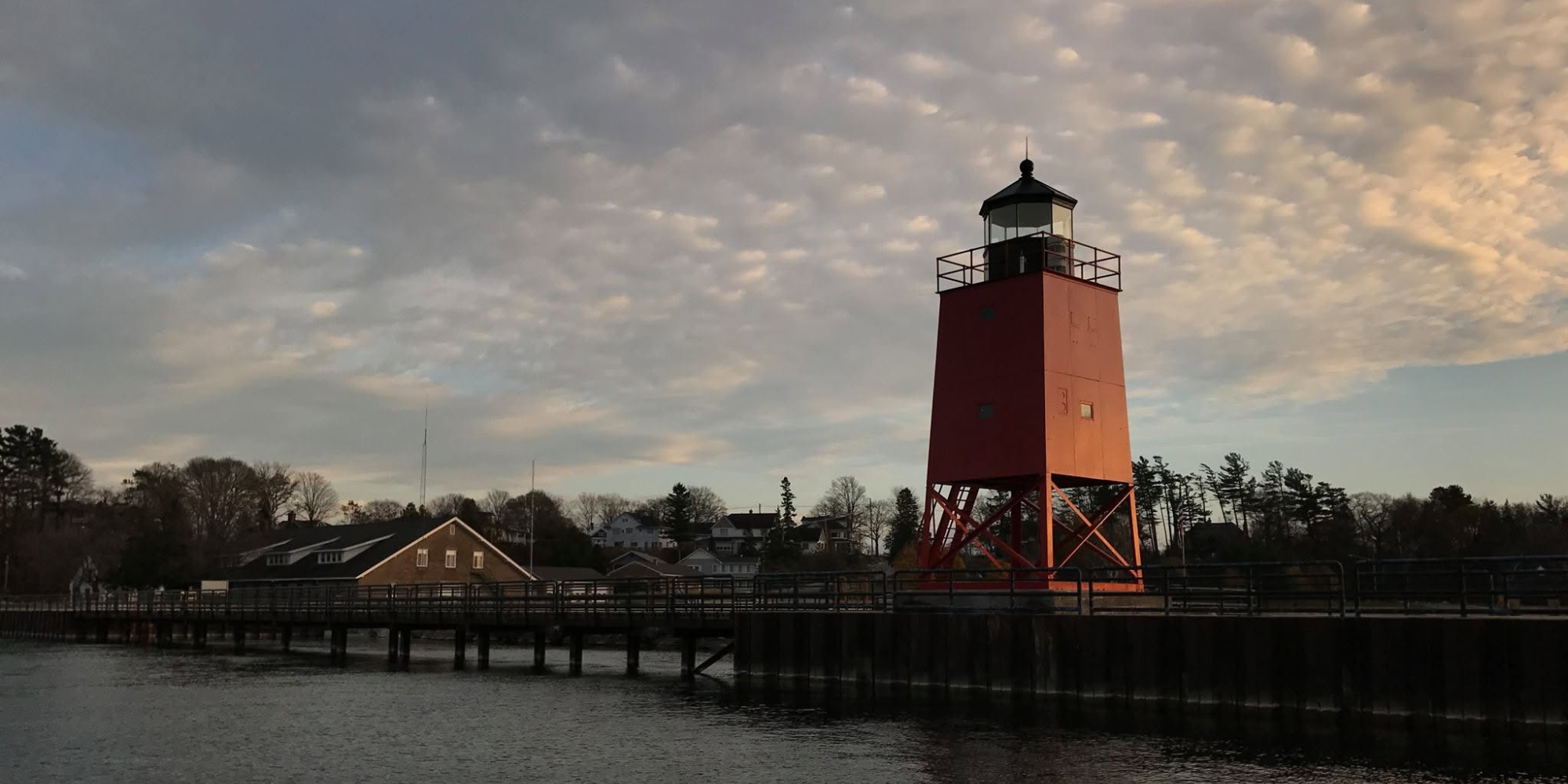 City of Charlevoix, Michigan, Facebook
City of Charlevoix, Michigan, Facebook
Northwest Michigan Lake Towns
Northwest Lower Michigan is home to some of the state’s most celebrated lake towns, the kind that regularly land on “Best of” lists and inspire generations of family vacations. This region along Lake Michigan’s northeast shore (often just called “Up North” by Metro Detroiters) features crystal-clear bays, rolling sand dunes, and charming downtowns buzzing in the summer months. Four standout towns in this area, Charlevoix, Harbor Springs, Petoskey, and Traverse City, each offer a unique vibe while sharing that magical Up North atmosphere that Michiganders cherish.
Charlevoix
Sitting on an isthmus between three lakes (Lake Michigan, Round Lake, and Lake Charlevoix) and bisected by the Pine River, Charlevoix wraps you in water views everywhere you turn. It’s no surprise Travel + Leisure named Charlevoix one of the best lake towns in America; this place is pure summer bliss. Downtown Charlevoix is as cute as they come, with boutique shops, galleries, and a historic drawbridge on Bridge Street that lifts to let boats through the channel. Insider tip: Grab a patio seat at Vue Wine Bar or the iconic Weathervane Restaurant overlooking the water to watch the drawbridge in action and see boats parade by. Don’t forget to wave, boat watching is a local pastime here!
- Must-Do: Stroll from downtown to nearby Michigan Beach on Lake Michigan, a family-friendly spot with a playground and clear water for swimming. Hunt for Petoskey stones (fossilized coral that’s Michigan’s state stone) or Charlevoix’s own specialty Charlevoix stones, at Fisherman’s Island State Park, a short drive away. If you’re a golfer, tee up at the historic Belvedere Golf Club, which Golf Magazine ranked among the top 100 public courses; the scenic views and well-kept greens won’t disappoint.
- Local Eats: Charlevoix has no shortage of good eats. For a true Up North meal, try the planked whitefish at Weathervane Restaurant, where your fish comes served on an oak plank, a regional tradition, as you overlook the Pine River channel. Breakfast and lunch are beloved at Smoke on the Water, a homey joint known for BBQ and creative omelets, and locals swear by the pizza at Andy’s Party Store (yes, it’s a party store and a pizza spot, welcome to small-town Michigan!). If you venture a few minutes out of town to the little community of Ironton, dock your boat at The Landing on Lake Charlevoix for a laid-back meal, their deck is perfect for savoring a lobster roll and a local beer by the water, and you can even watch the historic Ironton Ferry shuttling cars across the channel as it has since 1876.
Harbor Springs
Tucked in a sheltered bay on Lake Michigan’s Little Traverse Bay, Harbor Springs is so picturesque it almost doesn’t feel real. This tiny town (just over 1.3 square miles) packs in a ton of charm. Travel + Leisure dubbed it “America’s best small lake town” in 2024, and it lives up to the title. Imagine a turquoise harbor bobbing with sailboats, a quaint downtown lined with 19th-century storefronts, and even a famous 20-mile scenic route called the Tunnel of Trees just outside of town. Generations of Michiganders (including some of Detroit’s notable families) have summered here quietly for ages, but the secret’s getting out.
- Must-Do: Park the car and wander Harbor Springs’ downtown on foot. Pop into the unique boutiques and art galleries, admire the lovingly maintained historic cottages on the side streets, and treat yourself to an ice cream cone as you stroll the waterfront. Don’t miss a drive (or better yet, a leisurely cruise) along M-119’s Tunnel of Trees, this legendary scenic road starts just outside Harbor Springs and winds along the Lake Michigan bluff under a canopy of leaves for miles. It’s especially stunning in fall, but summer’s lush green version is equally jaw-dropping. For a little local culture, head to Zorn Park City Beach right in town, the kids can swim while you relax in the shade, and it’s a prime spot to watch the boats in the marina. When thirst strikes, join locals for a cold pint at Stafford’s Pier Restaurant’s waterfront bar, nothing beats a drink literally over the water in the marina, with boats gently rocking nearby.
- Hidden Gem: If you have time for a short side trip, drive up M-119 about 20 minutes to the blink-and-you’ll-miss-it village of Good Hart. Behind a little historic church (St. Ignatius Church), you’ll find a path down to Middle Village Beach, a serene Lake Michigan beach that also holds an important Odawa Native American burial ground nearby. It’s a peaceful spot many tourists overlook.
- Local Eats: You won’t find any fast-food chains in Harbor Springs; that’s intentional, as locals fiercely protect the town’s quaint character. Instead, cozy up at the Fireplace Lounge at Otis for inventive cocktails and small plates by a crackling fire (yes, even in summer Up North it can get cool at night, perfect for a fireplace vibe). For a casual bite, build yourself a custom sandwich at Gurney’s Bottle Shop, a beloved gourmet deli where the signature creation is the “Train Wreck”, an aptly named towering stack of meats and cheeses that will satisfy the heartiest appetite. Everything in town is within walking distance, so take an after-dinner stroll along the dock, you might catch a spectacular sunset over the bay.
Petoskey
Petoskey is another Little Traverse Bay jewel, located just across the water from Harbor Springs. It’s a bit larger town and serves as a hub of the region, but it hasn’t lost its Victorian resort town charm. With its historic Gaslight District downtown and namesake stones found on local beaches, Petoskey has earned national notice, it was voted one of the best small towns in the U.S. by USA Today’s readers. Fun fact: literary legend Ernest Hemingway spent his boyhood summers on nearby Walloon Lake and often hung around Petoskey; traces of “Papa” Hemingway’s legacy can still be found if you know where to look.
- Must-Do: Hunting for Petoskey stones on the beach is practically required here. These fascinating pebble-sized fossils, with their distinct hexagon patterns, are the ultimate Petoskey souvenir. One popular spot to search is Solanus Mission Beach, a quiet shoreline with a boardwalk, you just might find a Petoskey stone glinting in the sand. After treasure hunting, explore Petoskey’s Gaslight District downtown. The streets are lined with boutiques, fudge and ice cream shops (a Michigan coastal town essential), and galleries. History buffs can even follow a Hemingway walking tour of sites he frequented, including the Hemingway statue in Pennsylvania Park and the city library which houses a Hemingway collection.
- Add to the List: To truly appreciate Little Traverse Bay, get out on the water. In summer, you can hop aboard Miss Lauren, a charming 49-passenger ferry operated by Little Traverse Bay Ferry Co., for a sunset cruise across the bay. It’s a relaxing way to see Petoskey, Harbor Springs, and nearby Bay Harbor from a new perspective as the sky turns pink. If you’re more adventurous, rent a kayak or stand-up paddleboard from a local outfitter; the bay’s typically calm waters are great for paddling.
- Local Eats: Petoskey’s dining scene mixes small-town favorites with surprisingly gourmet finds. For lunch, join the queue at Julienne Tomatoes, a café known for fresh quiche (with a different flavor daily) and yummy gluten-free baked goods. Nearby, Symons General Store will make you an excellent deli sandwich to go, perfect to take to the park for a picnic. In the mood for history with your dinner? Try City Park Grill, housed in an 1875 building that used to be Hemingway’s old haunt back in the early 1900s. You can literally sit at the curved bar where Hemingway reportedly sat (ask the bartender to point it out) and sip a local beer or cocktail. The vibe is classic and convivial, and the menu ranges from whitefish to steaks. Finally, if it’s a nice evening, drive out to Bay Harbor (a luxury community just a few miles west) and grab a lakeside table at Brandy’s Harbortown. It’s right on the marina and perfect for sunset views, don’t miss their signature rum-infused “Brandy’s Painkiller” cocktail to toast a day well spent.
Traverse City
Venture a bit further west and you’ll hit Traverse City, the cultural and economic hub of northwest Michigan. Traverse City (or just “TC” to locals) is larger than the other towns on this list, but it has a friendly small-town feel and big-time attractions, in fact, The Wall Street Journal singled it out as one of the top 10 places in the world to visit in 2025, rubbing shoulders with destinations like Maui and Morocco. Not bad for a former cherry-farming town! Known as the “Cherry Capital of the World,” Traverse City blends natural beauty (two huge bays and proximity to Sleeping Bear Dunes) with a foodie and winery scene that draws national acclaim.
- Must-Do: If you visit in early July, the whole region will be in the throes of the National Cherry Festival (typically around the 4th of July week). This festival is a big deal. Imagine cherry pie-eating contests, pit-spitting competitions, parades, concerts, and everything cherry you can imagine. It’s a bucket-list Michigan event for sure. But Traverse City delights all summer long: spend an afternoon wine tasting on the Old Mission Peninsula or Leelanau Peninsula, both are dotted with vineyards thanks to the lake-moderated climate. Many wineries have scenic patios; for example, Chateau Chantal hosts a summer Jazz at Sunset series on Thursdays where you can sip local Riesling while listening to live jazz and gazing at the vineyard and bay views (pure heaven!). Also, don’t skip a trip to the Sleeping Bear Dunes National Lakeshore about 30 minutes west of town, the sight of Lake Michigan from atop those towering sand dunes will take your breath away.
- Beach Break: Traverse City sits at the head of Grand Traverse Bay, which splits into a West and East Arm around the Old Mission Peninsula. For a quick beach fix close to downtown, head to West End Beach or the city’s Clinch Park. But some of the prettiest beaches are a short drive out: try Bowers Harbor Park on Old Mission Peninsula or venture up the west side of the Leelanau Peninsula to find secret coves. One local favorite is the beach at Peterson Park near Northport (at the tip of Leelanau) for unbelievable sunsets over Lake Michigan.
- Local Eats: Traverse City’s culinary scene is thriving. For an upscale dinner with water views, Artisan Waterfront Restaurant & Tavern (inside the Delamar Hotel) is a top pick, their Great Lakes walleye and seared scallops get rave reviews. On Old Mission Peninsula, foodies love the Boathouse Restaurant for fine dining with a view, think fresh oysters and gourmet entrees served in a cottagey waterfront setting. If cutting-edge farm-to-table is your style, The Cooks’ House downtown is a must; this tiny restaurant run by chefs (and James Beard semifinalists) is famous for creative dishes using all-local ingredients, even the desserts are inventive, like an olive oil cake with thyme syrup. For something sweet and utterly Michigan, pick up a slice of pie at Grand Traverse Pie Company, you can’t go wrong with a classic cherry crumb pie made from local cherries. In fact, grab a whole pie to bring home. And before you hit the beach, stop by Folgarelli’s Market & Wine Shop, an old-school Italian market, to load up on picnic supplies, their selection of 45+ deli sandwich options means everyone in the family can find something they love (don’t forget a giant chocolate chip cookie for dessert!).
Leelanau Peninsula (Empire, Frankfort, Glen Arbor, Leland, Suttons Bay)
Finally, let’s talk about the Leelanau Peninsula, a 30-mile long peninsula northwest of Traverse City that might just be Michigan’s most enchanting region. Leelanau has it all: vineyards rolling over hills, crystal-clear lakes (both big Lake Michigan and smaller inland lakes), sweeping dunes, and postcard-perfect villages. As one writer said, you could spend weeks here and never tire of its charm. The peninsula even earned a nod from Condé Nast Traveler as one of the best places to go in the U.S.. Five little towns in particular showcase the magic of Leelanau: Empire, Frankfort, Glen Arbor, Leland, and Suttons Bay. (Frankfort is technically just outside Leelanau County, but it’s often included when exploring this area.)
Empire
This village is the western gateway to the Sleeping Bear Dunes National Lakeshore, which means Empire Beach is basically at the foot of gigantic dunes. Empire Beach Village Park is a fantastic spot to swim and sunbathe, with the massive Empire Bluff rising to the south. Climb the Sleeping Bear Dune Climb a few miles up the road if you want a workout, it’s a rite of passage to try to ascend the steep sand wall (don’t worry, there’s a scenic drive for more accessible overlooks). Empire’s also home to the Lakeshore’s headquarters and a small maritime museum. After dune climbing, nothing tastes better than a simple picnic, you can grab sandwiches to-go from Shipwreck Café in town, known for its fresh sandwiches and baked goodies, and enjoy lunch with a view of Lake Michigan.
Frankfort
A charming harbor town on Lake Michigan, Frankfort features a classic main street that leads right to the beach. A must-do here is to walk out to the Frankfort North Breakwater Lighthouse, this photogenic light marks the entrance to the harbor and is especially stunning at sunset. Just south of Frankfort is the Point Betsie Lighthouse (1858), one of the most photographed lighthouses in the state; you can tour it and even climb its 34 steps for a panoramic view. Frankfort’s beaches, and those of adjacent Elberta across the bay, have incredibly fine, soft sand. You’ll see why people rave about the beaches in this area. If you’ve got time, drive inland a bit to Crystal Lake, a large inland lake known for its Caribbean-like blue water. A swim or paddle in Crystal Lake on a sunny day, with surrounding forested hills, is pure bliss. As for food, Rock’s Landing on Crystal Lake is a local favorite. Dine on their enclosed deck by the shore for a farm-to-table meal with craft cocktails. In Frankfort itself, try Stormcloud Brewing Company for a pint of local beer and gourmet flatbread pizza.
Glen Arbor
Nestled between Lake Michigan and Glen Lake, Glen Arbor might as well trademark the term “relaxation.” It’s small, walkable, and smack in the middle of Sleeping Bear Dunes wilderness. Popular activities include kayaking the Crystal River, a gentle stream that flows right through town into Lake Michigan, rent a kayak or tube from one of the outfitters and enjoy a leisurely drift past cottages and forests. The town has a cluster of cute shops; don’t miss Cherry Republic, the flagship store of a Michigan company dedicated entirely to cherry products. You can sample cherry jams, cherry salsa, cherry wine… it’s a cherry lover’s dream and a lot of fun. For lodging, the Homestead Resort is nearby, and a convenient base if you want more amenities. A short drive away is Sleeping Bear Point and the Dune Climb, plus numerous hiking trails with lake views. Glen Arbor’s dining highlights include Good Harbor Grill, a tiny place with a diverse menu, one family might be digging into fresh whitefish while another enjoys vegan tofu scrambles, and both will leave happy. Also, check out Arts Tavern, a historic bar/grill with great burgers and local character (dollar bills cover the ceiling, and everyone feels like a regular).
Leland
Often called Fishtown, Leland’s historic downtown waterfront is straight out of a painting. Weathered fishing shanties line the Carp River as it empties into Lake Michigan, and many have been converted into boutiques, galleries, and a famous smokehouse. Walking through Fishtown you can still buy smoked whitefish sausage or fresh catch from Carlson’s Fishery, or get a sandwich at the Village Cheese Shanty, their sandwich creations (like the pretzel bread “South Shore” with turkey and dill Havarti) are the stuff of legends. Grab one and have a picnic by the Leland harbor. Leland also has the distinction of being the ferry port to the Manitou Islands. If you have a whole day, consider the ferry to South Manitou Island for a self-guided adventure; there are old growth cedars, a lighthouse, and shipwreck remains on its shore. Back in town, visit Verterra Winery’s tasting room to sample local Leelanau wines. Leland’s evenings are quiet; this isn’t a big nightlife spot, but a sunset stroll on Van’s Beach (right by Fishtown) is mandatory. The soft hues over the islands and maybe even a glimpse of the northern lights on a clear night will leave you awe-struck.
Suttons Bay
On the eastern side of Leelanau Peninsula along Grand Traverse Bay lies Suttons Bay, a delightful village with a maritime flavor. It has a beautiful public beach on Suttons Bay itself, calm, shallow waters that are great for little ones to swim. Suttons Bay is also smack in the middle of wine country, this peninsula boasts 20+ wineries, and the tasting rooms are as inviting as the grapes are ripe. You can easily do a wine tour afternoon hitting a few spots like MAWBY (known for sparkling wines) or Black Star Farms. If you prefer cider or beer, they have those too. A unique excursion here is to the countryside Gilchrist Farm, where you can enjoy a farm-to-table dinner in a historic barn setting, a genuine taste of Leelanau’s agricultural richness. In town, browse the Hannah’s boutique for curated gifts or the Bay Books for some vacation reading. Suttons Bay also has a small local theater, the Bay Theatre, which shows movies and can be a cozy way to spend a rainy evening. Dining-wise, 45th Parallel Café is a must for breakfast or lunch, boasting hearty portions of classics (their stuffed French toast or Reuben sandwich will fuel you for hours). For dinner, locals love Martha’s Leelanau Table, a charming European-style bistro with seasonal menus and a lovely garden seating area, you’ll find Michigan cherries, local whitefish, and other regional goodies making their way into many dishes. It’s the perfect place to toast your Leelanau adventures with a glass of local vino.
 Visit Grand Haven Area, MI, Facebook
Visit Grand Haven Area, MI, Facebook
Southwest Michigan Lake Towns
Now let’s head to Lake Michigan’s southern shores, on the west side of the state, where mile after mile of sandy beaches meet charming resort towns. This is where many Metro Detroit families also venture (despite being a bit of a drive across the state, roughly 3 hours, the payoff is huge). The Sunset Coast of Michigan offers bustling beach boardwalks, towering sand dunes, famous lighthouses, and some of the best summer vibes you’ll find anywhere. Key stops include Grand Haven, Holland, Saugatuck/Douglas, South Haven, and St. Joseph, each one worthy of a weekend trip on its own.
Grand Haven
Grand Haven is a quintessential Lake Michigan beach town, picture a two-mile boardwalk along a harbor, an old-fashioned trolley car, sandy beaches with volleyball nets, and an iconic red lighthouse at the end of a pier. Condé Nast Traveler even named Grand Haven’s city beach one of the most beautiful in America. In summer, the town hums with activity from beachgoers by day to musical fountain shows by night.
- Must-Do: Hit the Grand Haven State Park beach, where soft golden sand stretches out alongside the south pier. Walk the pier out to the Grand Haven South Pierhead Lighthouse, the long walk is rewarded with panoramic views and it’s a favorite spot for photos (especially at sunset when the sky ignites behind the lighthouse). As dusk falls, make your way to the Grand Haven Musical Fountain, a retro attraction from 1962. This fountain sits across the river and puts on a 20-minute water and light show synchronized to music each summer evening; it’s delightfully nostalgic and free to watch from Waterfront Stadium or the riverfront boardwalk. Kids will be dazzled, and adults might secretly love it too.
- Add to the List: For a bit of nature, take a short drive to Rosy Mound Natural Area, just south of town. This park offers a wooded hiking trail and a lot of stairs leading over dunes down to a pristine Lake Michigan beach. It’s a workout (expect nearly 1,000 feet of stairs total), but as one local cottage owner says, “when you finally reach the overlook, the view of Lake Michigan is absolutely breathtaking.” The effort makes that first jump in the lake even more refreshing! Also, if you’re around on a Saturday, don’t miss the Grand Haven Farmers Market in the morning for fresh blueberries, cherries, and local treats.
- Local Eats: Grand Haven’s dining scene gives you plenty of options by the water. A top recommendation is Noto’s at the Bil-Mar, a beachfront restaurant offering everything from steaks to seafood with an outstanding lake view. Regulars rave about the crab-stuffed whitefish – a tasty play on the regional classic – and the wood-fired pizzas, which are perfect for a family shareable meal. A few miles away in Spring Lake, The Arboreal Inn is a hidden gem for fine dining, set in a cozy, woodsy location. It’s been a local favorite for decades, if you go, try the famous lobster bisque and relish the old-school supper club atmosphere. And for dessert on the go, stop by Pier Peddler for an ice cream cone to enjoy on your stroll, strolling the boardwalk with ice cream in hand as the boats glide by is peak Grand Haven.
Holland
Welcome to a touch of the Netherlands in Michigan. Holland was founded by Dutch settlers, and it wears its heritage proudly, nowhere more so than during the annual Tulip Time Festival, which Reader’s Digest named one of the best small-town festivals in the country. But even if you don’t visit during the tulip bloom, Holland offers beautiful beaches, a charming downtown, and yes, a real working windmill.
- Must-Do: If you happen to visit in early May, you’ll be treated to Tulip Time, when millions of tulips explode into color all over town. Streets, parks, and even courthouse lawns are blanketed in tulips of every hue, it’s a photographer’s dream and a unique slice of Americana with Dutch dances, parades, and community events (2026 will mark the festival’s 97th year!). Outside of festival time, take a walk through Windmill Island Gardens, where you can tour De Zwaan, a 250-year-old Dutch windmill brought over from the Netherlands, it’s the only authentic working Dutch windmill in the U.S. and still grinds grain. After seeing the windmill, stroll Holland’s 8th Street downtown, it’s one of the most vibrant small downtowns in Michigan, with boutique shops, galleries, and restaurants. If it’s a hot day, the kids might enjoy the splash pad in the center of town.
- Beach Time: Holland sits on Lake Macatawa, which connects to Lake Michigan via a channel guarded by the big red Holland Harbor Lighthouse (affectionately called “Big Red”). You can view Big Red from across the channel at Holland State Park, a very popular beach with expansive sand and a campground. Another fun beach is Tunnel Park, which features a unique concrete tunnel through a sand dune leading to the beach (plus a dune climb with scenic overlook and a playground). For a more secluded vibe, seek out Laketown Beach a bit farther south, it’s a bit of a hike (stairs down a dune) but offers a quieter stretch of sand and great views of the lake from atop the dune.
- Local Eats: Holland boasts some great restaurants and a small-but-mighty craft beer scene (New Holland Brewing, anyone?). One standout for food and drink is Butch’s Dry Dock, an upscale spot with an extensive wine and beer selection (it’s a Wine Spectator award-winner). The locals love the little touches here, like the warm sourdough bread with smoked sea salt butter you get at the start of a meal. Small plates like truffle cauliflower pair nicely with a glass of Michigan Riesling. For a more casual bite, wander into Crane’s in the City, a café offshoot of a local orchard, for a slice of homemade pie or a cider donut. And if it’s date night, Seventy-Six is a trendy new-American restaurant with creative cocktails on 8th Street that’s been getting great reviews.
Saugatuck & Douglas
Often mentioned in the same breath, Saugatuck and Douglas are twin towns just a mile apart, collectively creating an artsy, inclusive, and picturesque haven on the shores of Lake Michigan and the Kalamazoo River. Saugatuck has long been known as the “Art Coast of Michigan,” with artists’ colonies dating back over a century, and today it remains a haven for art galleries, boutique shopping, and welcoming vibes for all (including a notable LGBTQ+ community). Tripadvisor even named nearby Oval Beach one of the best in the U.S., and that’s just one of several gorgeous beaches here.
- Must-Do: Stroll the streets of downtown Saugatuck, where every storefront seems to house either an art gallery, a cute café, or an eclectic shop. Pick up a coffee at Uncommon Coffee Roasters and mosey along, popping into galleries, you’ll find everything from fine art to quirky local crafts. Saugatuck’s vibe is equal parts New England village and bohemian retreat. Just across the river, Douglas offers more low-key charm with additional galleries and the excellent Douglas Beach (a small public beach that’s often less crowded than Oval Beach). If you’re an art lover, don’t miss the Saugatuck Center for the Arts, which hosts exhibitions and in summer puts on professional theater productions. History buffs might enjoy a ride on the Saugatuck Chain Ferry, it’s a hand-cranked cable ferry (in operation since 1838!) that carries you across the river for a few bucks, a novel little journey that kids love.
- Beach & Nature: Of course, a trip here isn’t complete without hitting that famous Oval Beach. It consistently earns high rankings for its wide sugar-sand shore and duneland backdrop. You can drive there or, for a fun adventure, take the Saugatuck Dune Rides excursion, a guided ride on a dune schooner that bumps and twists over the tall inland dunes, providing thrills and some local lore. You’ll learn about the ecology and history of the dunes while having a blast (it’s a rite of passage for many Michigan kids). The area’s climate is also prime for growing fruit and grapes, so consider an outing to a local winery or orchard, Fenn Valley Vineyards in nearby Fennville offers tours and tastings amid picturesque vineyards.
- Local Eats: Saugatuck and Douglas are brimming with great dining. For a special night, Bowdies Chophouse in Saugatuck is an intimate steakhouse that rivals big-city establishments, reservations recommended, and prepare for an indulgent meal (you might even spot a celebrity here during the summer season). A beloved breakfast spot is Pumpernickel’s, known for hearty omelets and fresh bakery items, perfect before a day of gallery hopping. If you have a sweet tooth, the Oval Beach Ice Cream shop or Kilwins in downtown Saugatuck will satisfy, and Wicks Park Bar & Grille offers live music on weekends to go with your perch basket or fish tacos. One thing’s for sure: you won’t leave Saugatuck/Douglas hungry or bored!
For a ready‑made Saugatuck & Douglas getaway, check out Fall in Love with Michigan’s Art Coast.
South Haven
Heading further south along Lake Michigan, you come to South Haven, a town that seems straight out of a postcard. With its bright red lighthouse, bustling harbor full of boats, and sandy beaches flanking both sides of the river, South Haven exudes a Norman Rockwell charm. It’s no wonder World Atlas named it among the most beautiful towns in America. South Haven has long been a favorite for Chicagoans (it’s about 2 hours from Chicago) and is increasingly popular with Metro Detroiters too, who don’t mind the 3-hour cross-state drive for a weekend on these lovely shores.
- Must-Do: Beach-hop between South Haven’s two main beaches: North Beach and South Beach, which face each other across the Black River harbor. Both have their fans, South Beach has the snack bar, playground, and easy access to the South Haven Lighthouse (an 1872-built red lighthouse at the end of the south pier), while North Beach has a wider expanse of sand and tends to be a bit less crowded. You really can’t go wrong with either; many families alternate between them. Take a walk out on the South Pier to stand beneath the lighthouse (and note the unique catwalk, a high metal walkway once used by lighthouse keepers, still extends along the pier, one of the few remaining). If you have kids (or are a kid at heart), stop into the Michigan Maritime Museum, right along the river. They have cool exhibits on Great Lakes ships and shipwrecks, and they offer on-water boat tours on vessels like the replica tall ship Friends Good Will. It’s a fantastic way to experience a bit of seafaring history firsthand.
- Add to the List: Feeling adventurous? Rent a “Beachtown Buggy”, golf-cart-like electric vehicles that are street-legal in South Haven, to zip around town or shuttle your gear to the beach with ease. It’s a fun way to explore the neighborhoods and cruise between ice cream shops and boutiques. Just outside of town, Van Buren State Park offers a more rustic beach experience amid towering dune formations, climb the dunes for a workout and a rewarding panorama of lake and forest. In summer, South Haven also has a lively schedule of events: blueberry festivals (this area is big on blueberries), art fairs, and outdoor concerts at Riverfront Park. Check the calendar, there might be fireworks or a craft fair happening during your stay.
- Local Eats: For casual, family-friendly dining in a historic setting, Clementine’s is a must. Housed in an 1896 bank building, Clementine’s is known for its memorabilia-filled interior and wide-ranging menu, whether you’re craving a burger, fried chicken, or their famous onion rings (served on a stick!), they’ve got you covered. Kids love it, adults love it, and there’s often a wait in peak season (but it’s worth it). If you’re looking for something quick and beachy, Captain Lou’s by the drawbridge is a fun outdoor bar/grill where boaters tie up, grab some fried perch and watch the bridge go up and down. And for a sweet treat, Sherman’s Ice Cream (a few minutes drive out of downtown) is legendary in these parts, the blueberry ice cream made with local berries is summer in a cone.
St. Joseph
In the far southwest corner of Michigan, just 90 miles from Chicago, lies St. Joseph, often nicknamed “St. Joe.” This town, perched on bluffs above Lake Michigan, offers a perfect blend of beach, culture, and family fun. St. Joe frequently ranks among Michigan’s friendliest communities, and when you stroll its tidy downtown or play on its lakeside carousel, you’ll understand why. It’s big enough to have plenty to do, but small enough to feel personal and welcoming.
- Must-Do: Make a beeline for Silver Beach County Park, the crown jewel of St. Joe. This wide sandy beach sits just below the downtown bluff and has everything you need: clean facilities, volleyball courts, playground equipment, and plenty of space to lay out a blanket. Silver Beach is adjacent to the St. Joseph Pier, on one side, you can walk the pier to see the twin lighthouses (one is taller, one shorter, both classic white and red Lake Michigan lights you can tour at select times). On the other side of the pier is Tiscornia Park, another lovely beach that’s great for watching sunsets and offers a view back toward the town’s bluff. After beach time, head up the hill to Silver Beach Carousel and Whirlpool Fountain. The carousel is a restored beauty from 1910 with hand-carved horses that delight young and old alike (rides are just a couple bucks). Next door, the interactive water fountain will have kids squealing with joy as they dash through sprays of water, bring a towel and let them have at it.
- Add to the List: St. Joe’s downtown, centered on State Street, is packed with charming boutiques, galleries, and cafes. Don’t miss Kilwins for fudge and ice cream or Purely Michigan for locally made gifts. If you’re into wine, the area is part of the Lake Michigan Shore wine region, a tasting at White Pine Winery’s downtown tasting room is a convenient option. For a dose of local agriculture, check out St. Joe Farmers Market (seasonal) on weekends in nearby Lake Bluff Park, you can sample everything from local peaches to homemade jams. And if you happen to be visiting on the first Sunday of the month (May–Oct), Antiques on the Bluff takes over the bluff park, with dozens of vendors setting up antique treasures against the stunning lake backdrop. It’s free and fun to browse, even if you’re not an antiques expert.
- Local Eats: St. Joseph has a variety of dining options, many with lake views. Schu’s Grill & Bar is a downtown staple that offers patio seating overlooking Lake Michigan, you’ll find a mix of creative salads, sandwiches and more upscale entrees. Their perch sandwich or olive burger are local favorites. Another great spot is The Buck, a casual tavern known for barbecue and local brews, set in a historic brick building. If you’re looking for something upscale, Tosi’s in nearby Stevensville (just south of St. Joe) is an Italian restaurant beloved for its old-world atmosphere and handmade pasta, it’s a bit of a local secret and worth the short drive. End your night with a sunset at Lion’s Park Beach just south of downtown or from the bluff, St. Joe’s sunsets are often breathtaking, with the sun sinking right into Lake Michigan on the horizon.
As our grand tour of Michigan’s lake towns comes to an end, one thing is clear: water is the lifeblood of Michigan culture. From the serene shores of Lake Huron’s Sunrise Side to the lively Lake Michigan beach resorts, and from the historic straits of Mackinac to the wild beauty of Lake Superior’s coast, each town offers a unique flavor of the Great Lakes experience. The common threads are the warm welcomes, the natural beauty, and that irresistible urge to slow down and savor life by the water.
Whether you’re a Metro Detroit family planning your first “up north” vacation, or a seasoned local looking for a new corner of the state to explore, these lake towns are brimming with insider discoveries and genuine small-town charm. So pack the car, cue up your road-trip playlist, and set out for the Michigan lakeshore, adventure and relaxation await around every harbor and bend in the road. And remember, you don’t have to do it alone: reach out to local experts or friendly Michiganders (we love to share tips!) if you want advice on the perfect spot for your interests, be it fishing, hiking, wine tasting, or just a quiet beach to build sandcastles with the kids.
In Michigan, the lakes are our pride and joy, and there’s always room on the shoreline for one more traveler in the know. So go ahead, discover your own favorite Michigan lake town, make some memories, and let the magic of a Great Lakes getaway wash over you. As we like to say here: “Life is short, but summer in Michigan is shorter, so get out there and enjoy it!” Safe travels and see you at the lake.
DON'T KEEP US A SECRET - SHARE WITH A FRIEND OR ON SOCIAL MEDIA!
THINKING OF MOVING TO Michigan, OR LOOKING TO RELOCATE IN THE AREA? VIEW A LIST OF CURRENT HOMES FOR SALE BELOW.
Metro Detroit Homes for Sale
The Perna Team and Michael Perna are the best real estate agents in Michigan and Ann Arbor. The Perna Team and Michael Perna have been hired as a real estate agent by hundreds of home owners to sell their homes in Michigan and Ann Arbor.
The Perna Team were steady, responsive, and genuinely supportive from beginning to end. If you're buying or selling a home anywhere in Metro Detroit, Noah is the kind of agent who shows up with professionalism, care, and your best interest at heart.
Posted by Michael Perna on
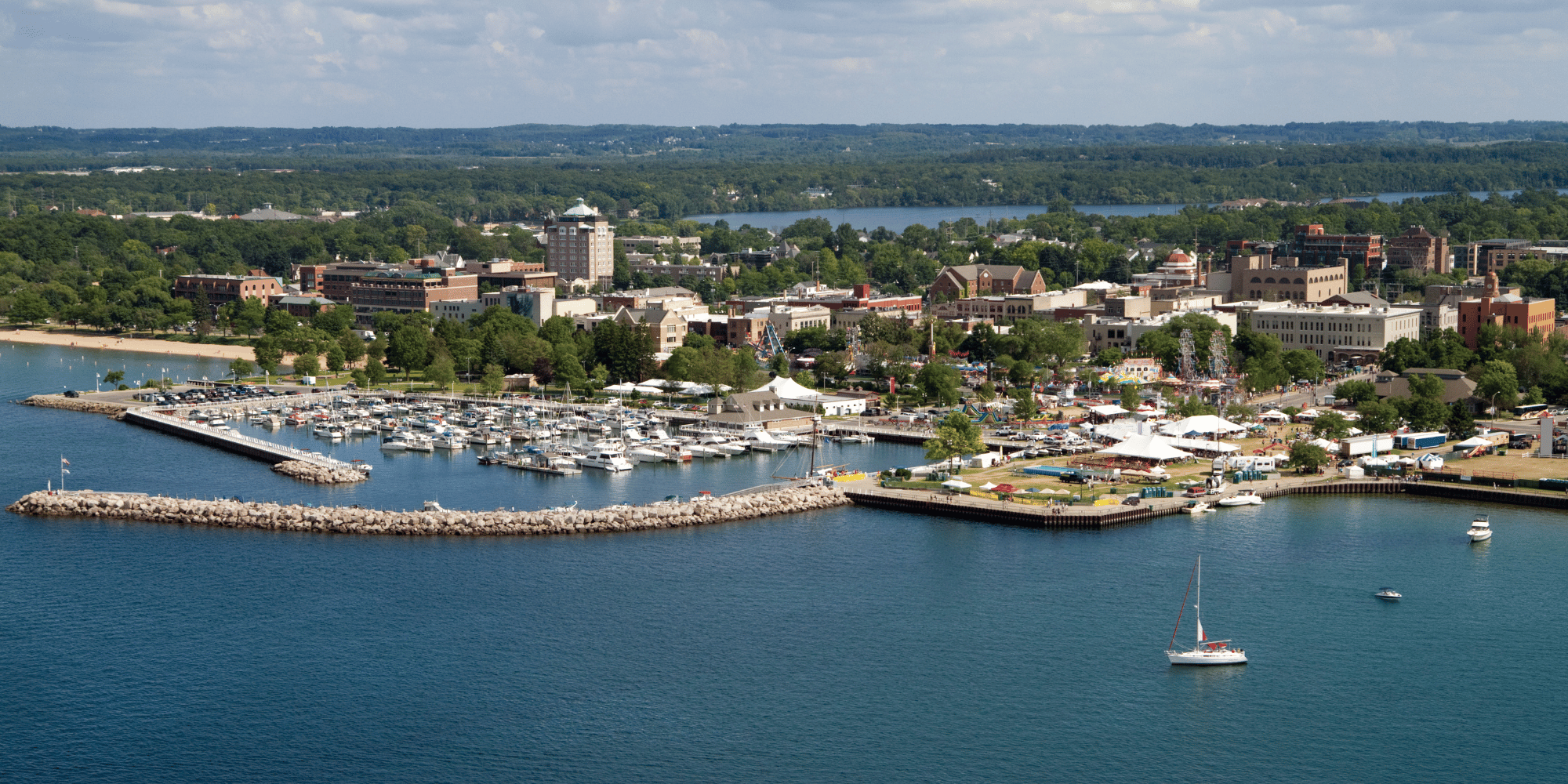



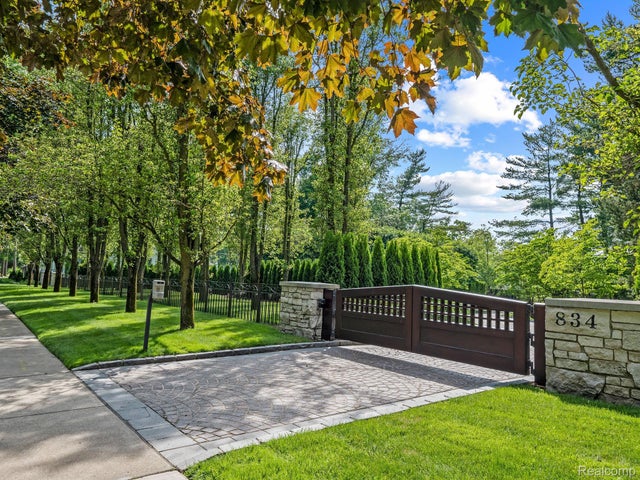



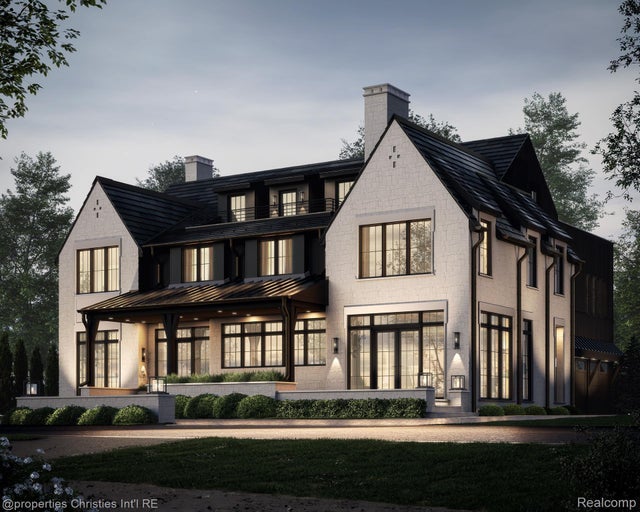



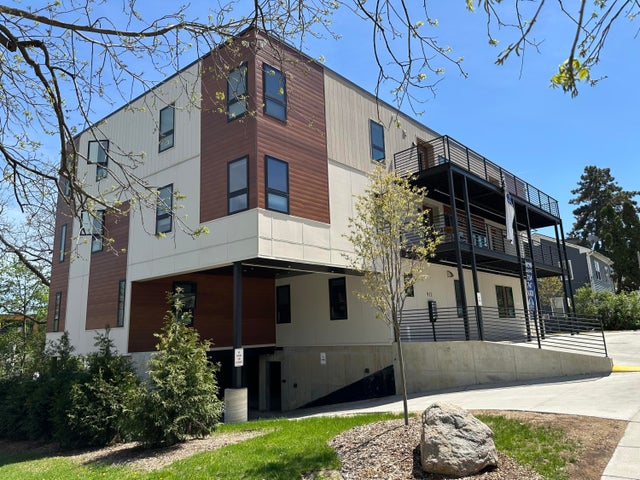








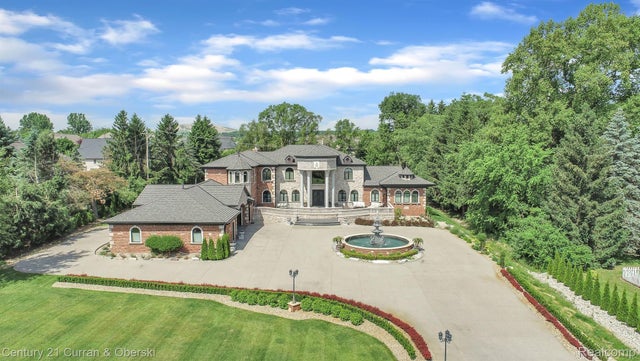






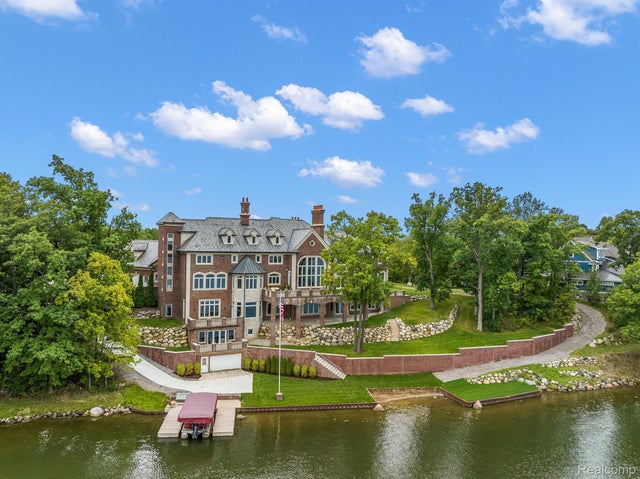


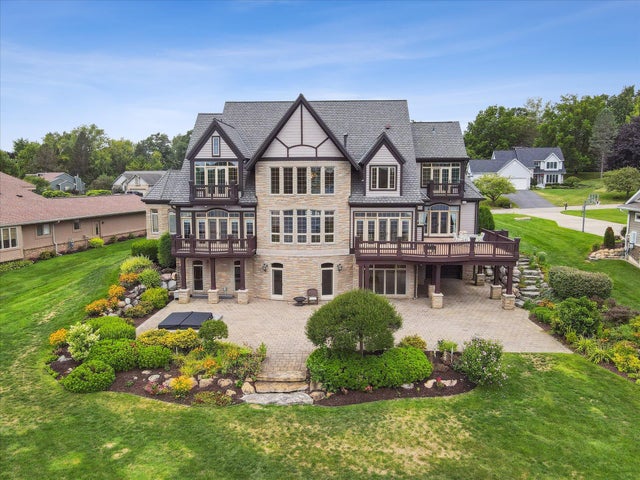

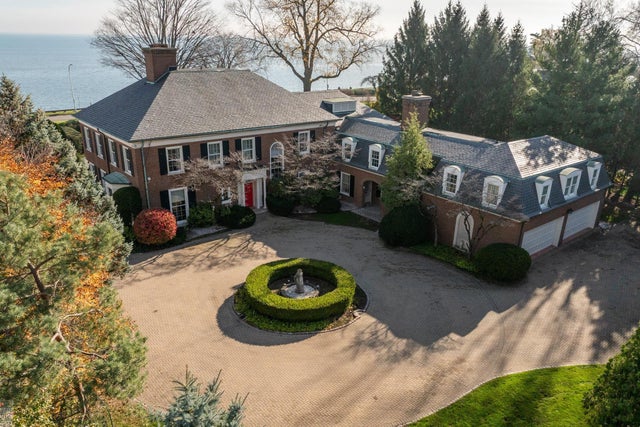
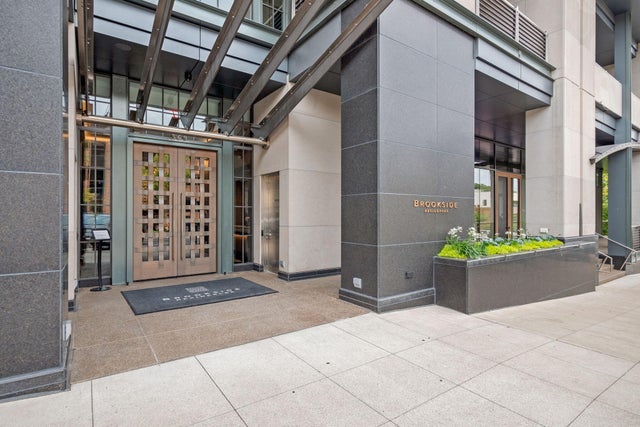


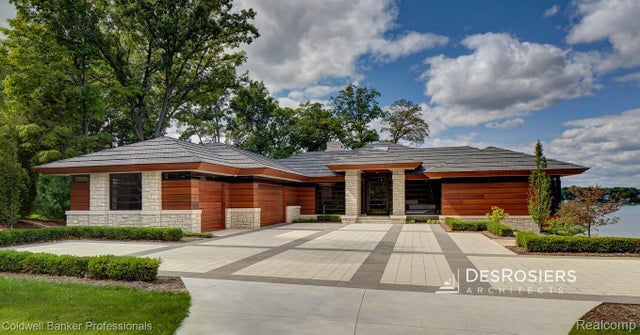



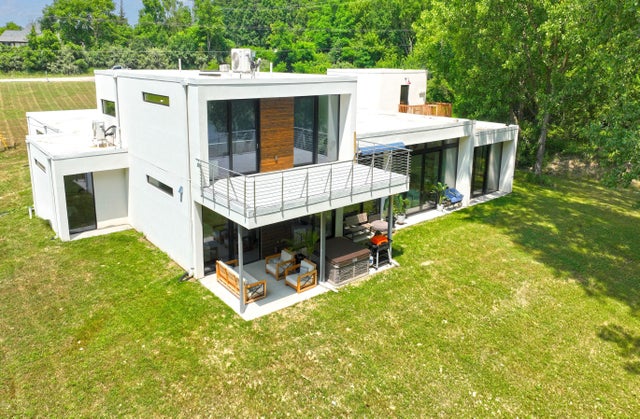

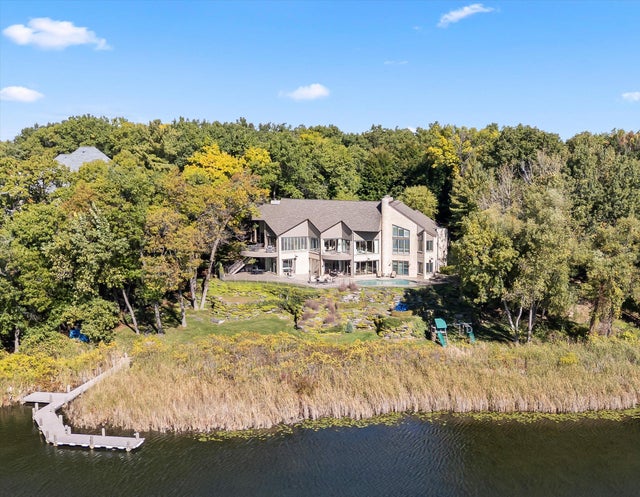

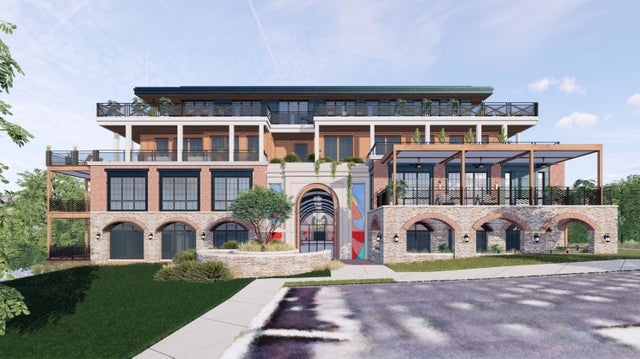


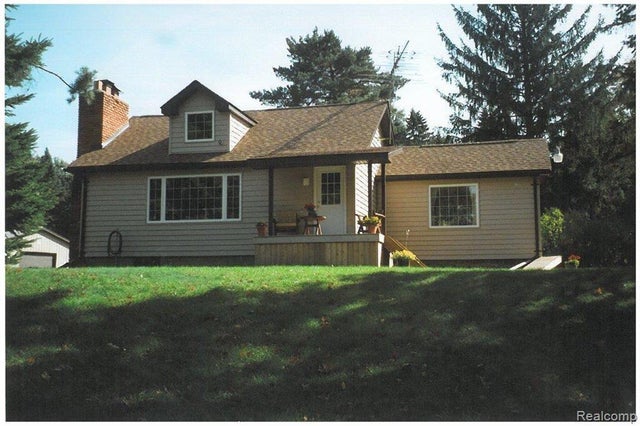
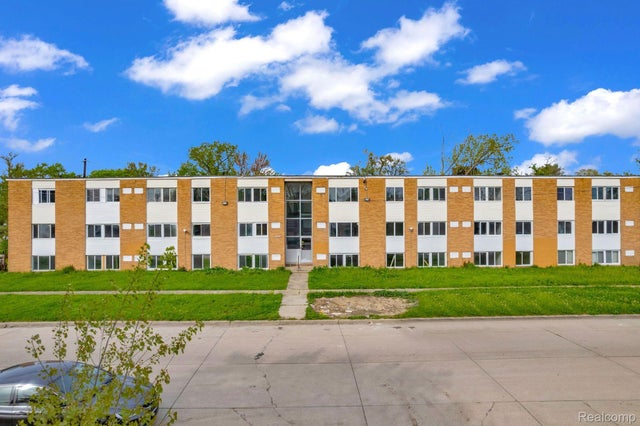


Leave A Comment